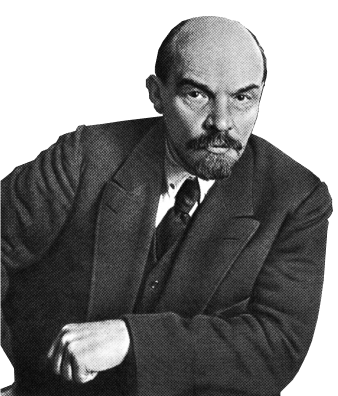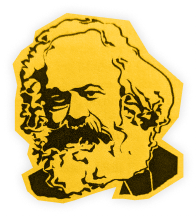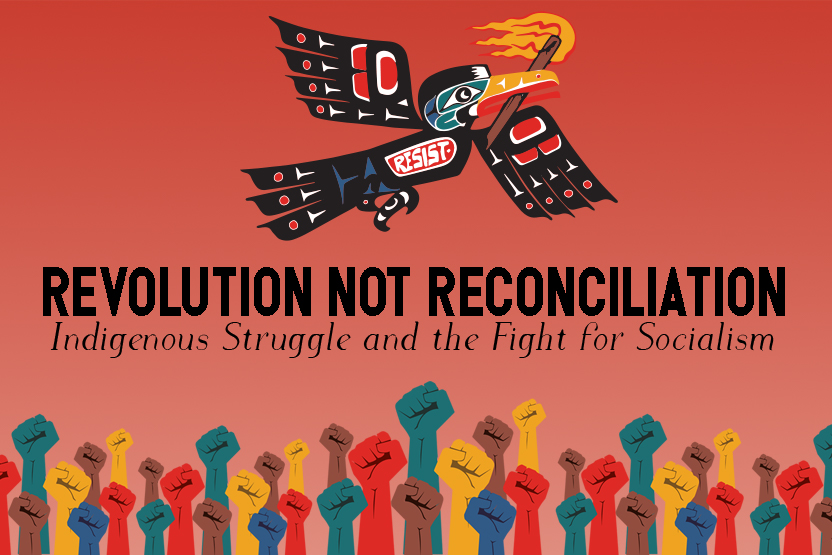
The following document is the product of over 20 years of study and participation in the fight of Indigenous peoples against Canadian capitalism. Over the years, we have learned from real-world struggle, and have detailed these experiences on the www.marxist.ca website. Revolution not Reconciliation encompasses the accumulated conclusions of the supporters of the International Marxist Tendency, Indigenous and non, applying Marxist theory to the movement on the ground. This process culminated in the 2019 Fightback/La Riposte Socialiste congress, where a draft version of the document was discussed, amended, and adopted, as the official position of the IMT. Here we detail a revolutionary Marxist analysis of the origin of Indigenous oppression, in opposition to the liberal/reformist hypocrisy of “reconciliation”, and the trap of identity politics and postcolonial theory, pushed by comfortable academics. The conclusions of this work have never been more timely, given the recurring explosions of Indigenous struggle in 2020. Only through mass revolutionary struggle against capitalism can all the oppressed be genuinely liberated. We appeal to all to study these lessons, discuss the conclusions, and unite with us in struggle.
— Oct. 21, 2020
This document is available for purchase in our bookstore. If you support these ideas, we encourage you to buy a copy, and to get involved.
As a defining feature of Canadian capitalism, the oppression of Indigenous peoples is of prime importance for Marxists. Most people exit the public education system with little exposure to the shameful history which underpins the Canadian capitalist system: one of violence, theft, and genocide against Indigenous people, which includes First Nations, Inuit and Métis peoples. According to bourgeois history, Canada’s relationship with the Indigenous peoples present in this land prior to European settlement is often depicted as cooperative and collaborative, while the American historical experience is portrayed as confrontational and violent. This has been used to promote a historical narrative of “peaceful cooperation” between the Canadian state and Indigenous peoples.
A look at the social conditions of many Indigenous communities today presents a starkly different picture. Despite decades of promises by both Conservative and Liberal governments, little has been done to improve the quality of life of Indigenous peoples on or off the reserves, or to repair the impact of generations of trauma inflicted by the state. Indigenous people are one of the most oppressed groups in Canadian society and continue to experience social maladies at rates far worse than the rest of the population.
Living and social conditions on many reserves are appalling. Canada as a whole routinely ranks among the top 10 nations in the world in terms of the UN Human Development Index. However, if these indexes were applied to Indigenous people alone, Canada’s position would be considerably lower, on par with many so-called Third World countries.
For example, despite the fact that Canada has the world’s third-largest supply of fresh water, water on many First Nation reserves is undrinkable or must be boiled before consumption. According to Indigenous Services Canada, there are currently 60 communities with long-term water advisories; this is down from 105 in 2015, but many more water systems on reserves are at risk of collapse.
In Neskantaga, a remote fly-in reserve in northern Ontario, people have been boiling water for more than 20 years after a water treatment plant that was built in 1993 broke down. Then there is Grassy Narrows, a northern Ontario community near the Manitoba border, which has lived with the effects of mercury in local lakes and rivers—the result of a commercial dump in the 1960s that has never been cleaned up. As a result, more than 90 per cent of residents currently display signs of mercury poisoning.
Housing on many reserves is in a deplorable state due to overcrowding and disrepair. The Assembly of First Nations estimates a shortage of 85,000 units countrywide. Overcrowding is six times higher on reserve than off. Of the housing already in place on reserves, just over 41 per cent need major repairs compared to seven per cent outside reserves, leaving thousands of Indigenous people living in hazardous conditions with a serious impact on health, education, etc. For example, poor housing and overcrowding is believed to be a significant contributing factor in the spread of tuberculosis, which has led Nunavut to have a TB rate 38 times the national average.
Poverty and unemployment are also higher for Indigenous people both on and off reserves. According to Statistics Canada, more than 80 per cent of reserves have a median income below the poverty rate, and the median income for Indigenous people both on and off reserves is 30 per cent lower than the rest of the population.
The median annual income for Indigenous people is just over $22,000, compared with the national average of around $35,000 for individuals in the general population. For First Nations people living off-reserves, the median income was about $22,500, compared to just over $14,000 for First Nations people living on reserves. At the time of writing, the unemployment rate among Indigenous people is 13 per cent, more than twice the rate among the non-Indigenous population.
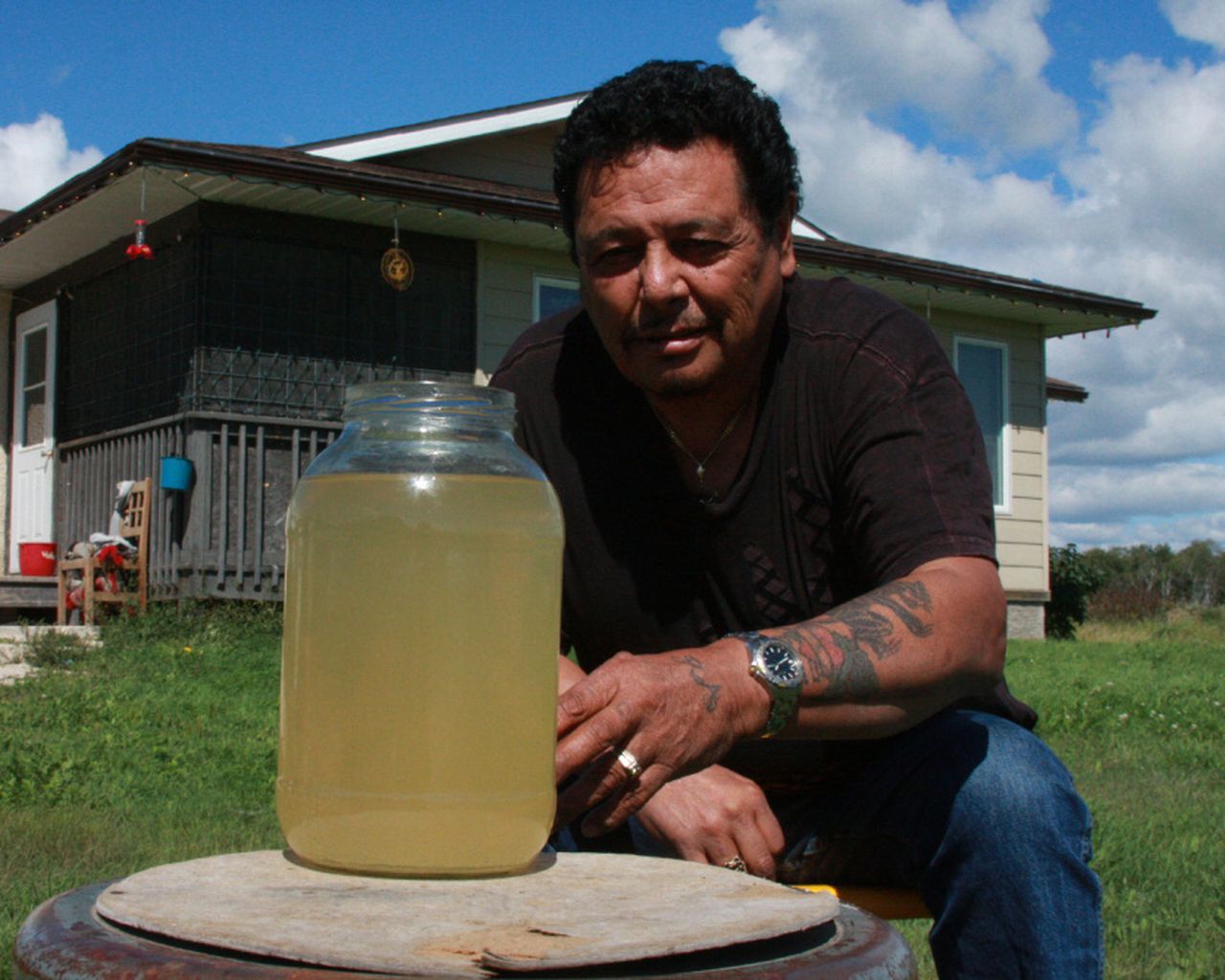
(The Star, 2010)
Indigenous women make up the poorest section of Canadian society. Forty-four per cent of Indigenous women living off reserves live below the poverty line. The poverty rate rises to 47 per cent amongst on-reserve women. The average annual income of an Indigenous woman is only $13,300. Poverty forces Indigenous women into situations or coping strategies that increase their vulnerability to violence, such as hitchhiking, addictions, homelessness, sex work, gang involvement, or abusive relationships. Sexism and racism in capitalist society compound this vulnerability. There is a crisis of missing and murdered Indigenous women in Canada, with between 1,200 to 4,000 lost sisters in the last three decades alone.
Incarceration rates for Indigenous people are severe compared to the rest of the population. Data released by Statistics Canada shows Indigenous youth made up 46 per cent of admissions to correctional services between 2016-17, while making up only eight per cent of the youth population. In Saskatchewan, 92 per cent of incarcerated male youth are Indigenous and 98 per cent of incarcerated female youth are Indigenous.
While Indigenous people make up around four per cent of Canada’s population, more than 23 per cent of the inmate population in federal institutions are Indigenous people. This amounts to an incarceration rate 10 times higher than among the non-Indigenous population. Indigenous adults make up the greatest proportion of admissions to jails in Manitoba at 74 per cent, and in Saskatchewan 76 per cent, while Indigenous adults only make up 15 per cent of the population in Manitoba and 14 per cent in Saskatchewan.
Around half of First Nations children live in poverty, but poverty rates reach as high as 62 per cent in Manitoba and 64 per cent in Saskatchewan. The poverty rate is 15 and 16 per cent among non-Indigenous children in these provinces respectively.
An Assembly of First Nations school survey showed that an estimated 47 per cent of First Nations currently require a new school building. Approximately 74 per cent of First Nations schools need major repairs related to requirements for additional space, plumbing and sewage issues, electrical, roofing, building code issues, and structure and foundation. Only 46 per cent of First Nations schools have a fully equipped gym. Only 37 per cent have a fully equipped playground or outdoor playing field. Only 52 per cent have a fully equipped kitchen and only 18 percent of First Nations schools have a fully equipped science lab. Only 39 per cent of First Nations schools have a fully equipped library. Only 48 per cent of First Nations schools have fully equipped technology, and only 67 per cent report good connectivity.
The bleak conditions faced by Indigenous communities and the legacy of colonialism have dire mental health implications. Suicide and self-inflicted injuries are the leading causes of death for First Nations youth and adults up to 44 years of age according to the Public Health Agency of Canada. The overall suicide rate among the Indigenous population is double that of the total Canadian population; among Indigenous youth, the suicide rate is five to six times higher than non-Aboriginal youth.
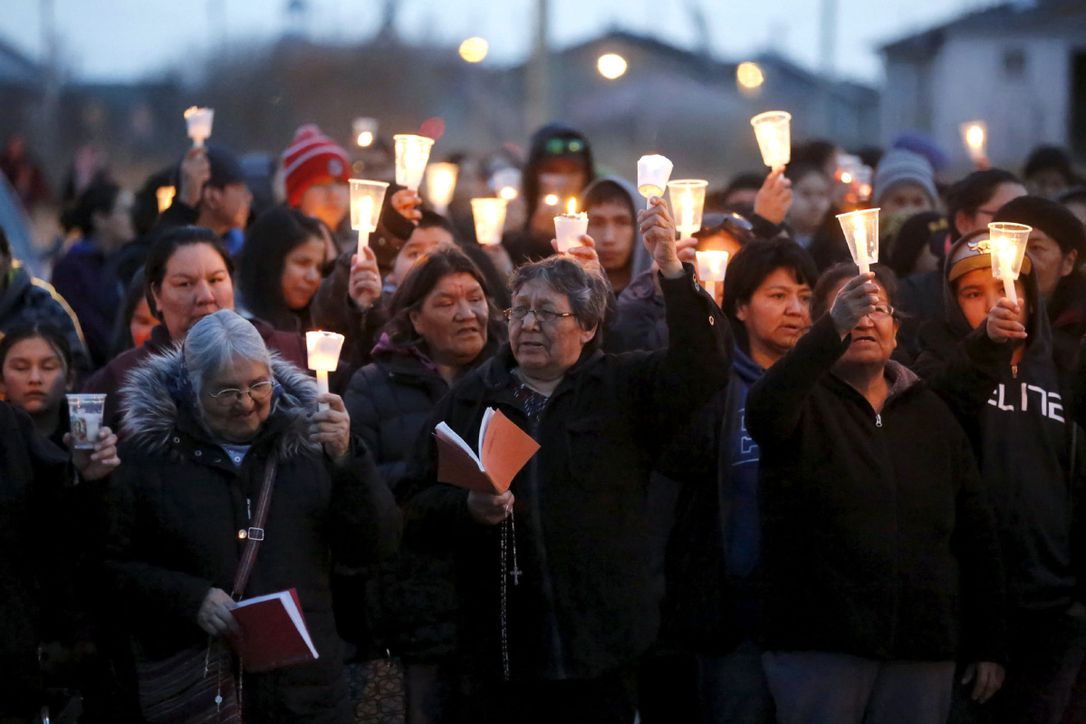
The suicide epidemic affecting First Nations communities across Canada has been a national crisis for decades, but it attracted international headlines after three Indigenous communities were moved to declare a state of emergency in response to a series of deaths. In the spring of 2016, Attawapiskat First Nation reserve in Ontario declared a state of emergency after 11 young people tried to commit suicide in one night—adding to an estimated 100 attempts made over 10 months among this community of 2,000 people. Not long after, it was revealed that six people, including a 14-year-old girl, had killed themselves over a period of three months in the Pimicikamak Cree Nation community of northern Manitoba. In the aftermath, more than 150 youths in this remote community of 6,000 were put on suicide watch.
Indigenous community leaders and youth activists have long explained the cause of this epidemic to be a sense of hopelessness among the youth due to a lack of resources and opportunities on reserves, compounded by discrimination and intergenerational trauma resulting from colonial oppression. The demands of the communities living with this suicide epidemic focus on access to social services and cultural and recreational programs, improved education and access to training and employment. Yet federal funding continues to fall short and Indigenous communities across the country are left without the resources they need to address this epidemic.
How can this state of affairs be explained and what are the solutions? We have to understand the root of these problems in order to fight them. Whenever we are attempting to analyse a present-day circumstance, event, or issue, we must begin from this vantage point: what are the social and historical conditions that have led to the present situation? This requires a study of the development of Canadian capitalism, which was founded and built on the brutal exploitation and colonization of Indigenous peoples. A study of this history also clearly shows that the continued oppression and suffering of Indigenous peoples today is inherently linked to the capitalist system, and points the way forward for emancipation through the fight for the socialist transformation of society.
Rich and varied cultures thrived before colonization
In what is now Canada, there had been several thousand years of human habitation, struggle and achievement before European colonization. When the European invaders first arrived there were more than 53 languages spoken from 11 main language families, with many variants and dialects. It is not possible to do justice to the rich variance of culture, language and traditions of the different Indigenous peoples in this text.
However, there were some common and recurring features across many Indigenous peoples that result from a similar organization around production and exchange. The structure of society that prevailed prior to colonization was what Friedrich Engels referred to as primitive communism.
While many academics have attacked the term “primitive communism” on the basis that this somehow denigrates Indigenous people, this is a complete misunderstanding of the term and was not in any way Engels’ or Marx’s intention. The original German word for this is Urkommunismus, which more correctly means the “first”, “original” or “primeval” communism. This term denoted a stage of society in which the productive forces, and therefore the productivity of labour, are not sufficiently developed to produce a stable surplus—the prerequisite for the development of class society and the state apparatus needed to defend it. This analysis is in no way meant to disparage Indigenous peoples, as every human society inevitably went through a similar phase and an honest reading of Engels would show that he spoke positively of the traditions of Indigenous communities, which in general were much more egalitarian than the capitalist “civilization” we live under today.
The organization of society under primitive communism is egalitarian and based on communal ownership of hunting and fishing grounds. Private property is limited to personal items. In the absence of class division, the state as a separate machinery of force for maintaining class rule does not yet exist.
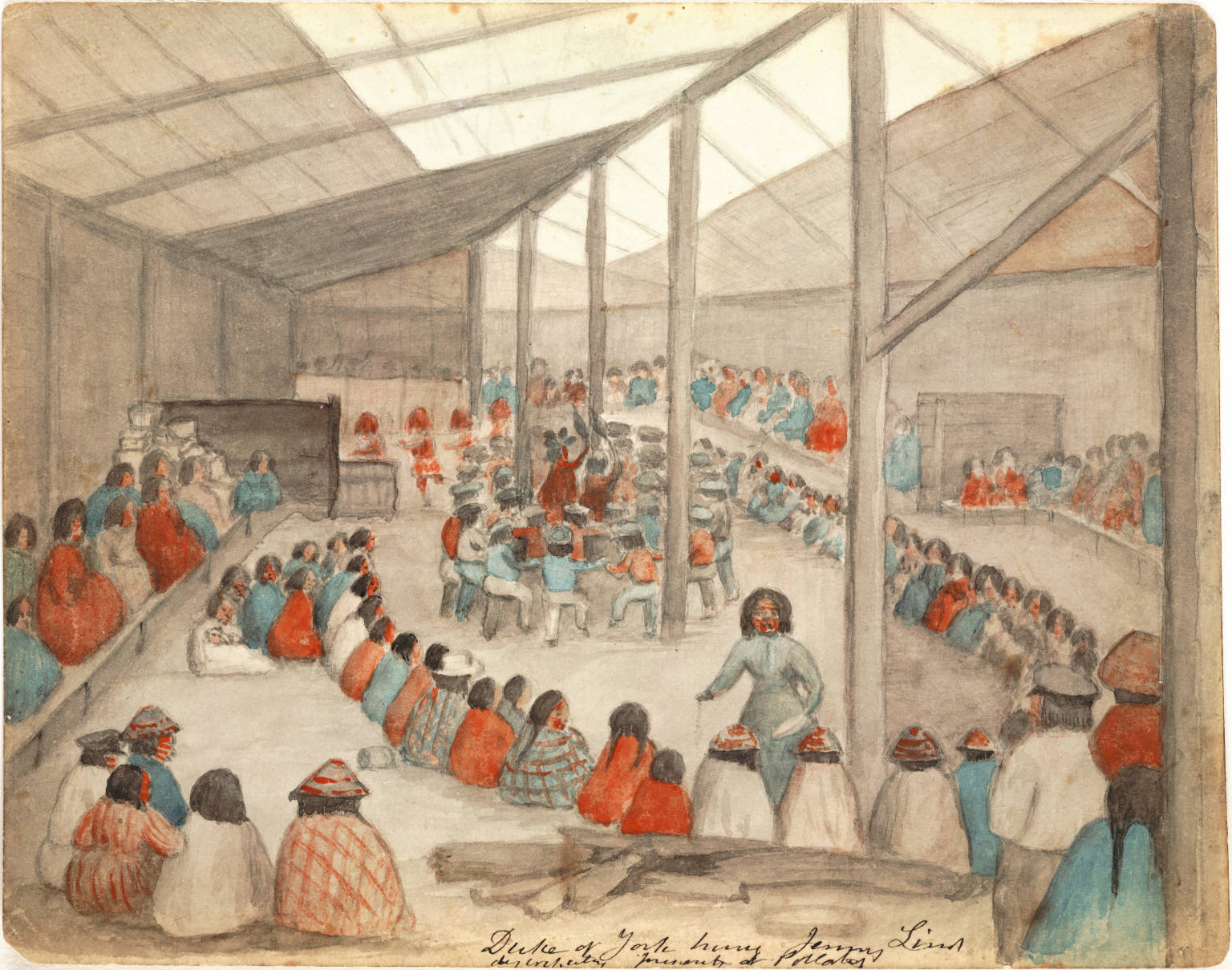
As Métis Marxist Howard Adams explained,
Before the Europeans arrived, Indian society was governed without police, without kings and governors, without judges and without a ruling class. Disputes were settled by the council, among the people concerned. Indian government was neither extensive nor complicated, and the positions were created only to ensure effective administration for a given period of time. There were no poor and needy in comparison with other members, and likewise no wealthy and privileged; as a result, on the prairies there were no classes and no class antagonisms among people. Members of the community were bound to give each other assistance, protection, and support, not only as part of economics, but as part of their religion as well. Sharing was a natural characteristic of their way of life. Each member recognized his or her responsibility for contributing to the tribe’s welfare when required, and individual profit-making was unknown. Everyone was equal in rights and benefits.
These societies also tended to be matrilineal, with the family being traced through the female bloodline and women occupying the head of the household and having powers to elect and dispose of war chiefs.
However, it is important not to view Indigenous peoples as a monolithic bloc. As Engels explained in The Origin of the Family, Private Property, and the State, primitive communist societies are not static and pass through various stages of development. Among the Indigenous peoples of the Americas, there was a wide variance in terms of socioeconomic development and ways of life. For example, the Haudenosaunee (“People of the Longhouse”, “Iroquois”, or “Six Nations”) of the Great Lakes region were agriculturalists, growing beans, squash, pumpkin, corn, and sunflowers. Instead of the temporary encampments characteristic of hunter-gatherer societies, they built large villages with permanent longhouses.
The cultivation of crops began to make possible for the first time the production (and storage) of a surplus of foodstuffs. This in turn led to trade by barter, and a wide trading network had developed prior to the European invasion. Various Indigenous peoples began to specialize in the development and trade of certain resources or products, including agriculture; hunting and the skin and fur trades; fishing, whaling and seal hunting; canoe production, bow production, tobacco farming, horse trading, iron and metal extraction, etc.
There is ample evidence of widespread trade throughout the Americas prior to the arrival of Europeans. Corn spread throughout the Americas via the complex Mayan trade network. Pipestone was traded extensively, and pipestone smoking artifacts have been found throughout the United States and Canada. The only pre-contact pipestone quarry was located in Minnesota. There is extensive evidence of widespread trading between Indigenous peoples on the West Coast of North America—trade in blankets, belts, skins, snowshoes, fish, baskets, paint, knives, iron and metals, and horses.
Along with these increasingly complex productive relations arose more complex social organization. Around the year 1570, the five Haudenosaunee tribes (Seneca, Cayuga, Onondaga, Oneida and Mohawk) united in a confederacy that has endured for hundreds of years: the Haudenosaunee Confederacy (also known as the “Iroquois Confederacy” or eventually the “Six Nations”). In 1720 these five were joined by a sixth tribe, the Tuscarora. The purpose of the Confederacy was to renounce mutual warfare, while presenting a united front against outside raiders.
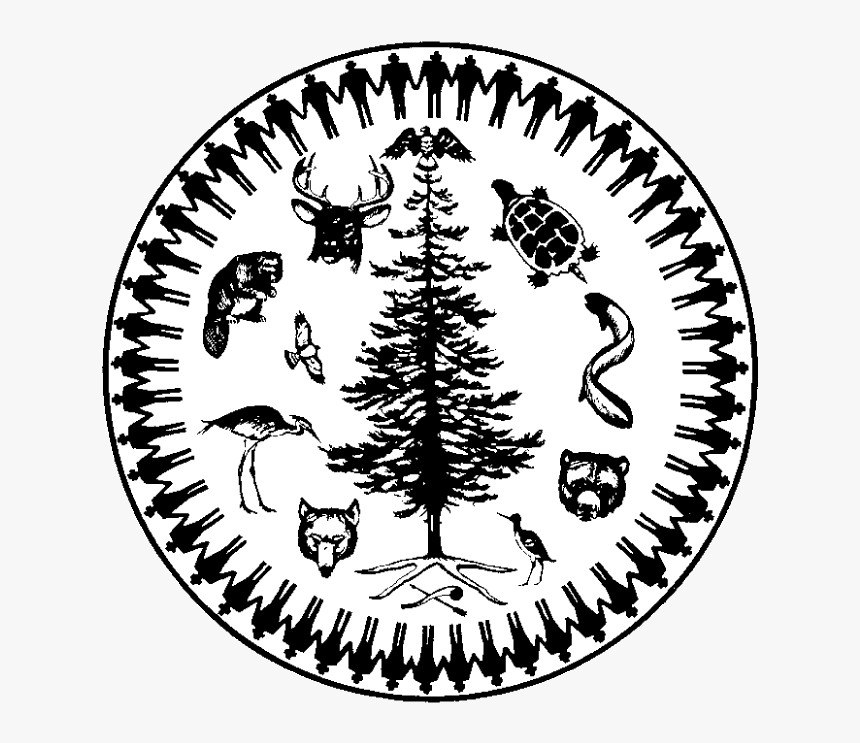
The tribal-military organization of the Haudenosaunee foreshadowed the eventual appearance, with the coming of class society, of the state. But as yet this state did not exist: there was no separate, permanent machinery of “bodies of armed men and prisons” characteristic of class society. Rather, the war chiefs held office only for the duration of warfare; the military force was the armed community instead of a separate standing army. Communal property also still prevailed.
Only in one area at the time of the arrival of Europeans was this communistic society beginning to break up and give way to a class social structure based on slavery: on the Pacific Coast. This was due to the extraordinary level of productivity of the main economic activity for Pacific Indigenous peoples: fishing. Production of a regular surplus means that it is possible for part of the community to live in idleness at the expense of the labour of others. Prisoners taken in war, instead of being adopted into the tribe as equals where all had to work (as was the case with the Haudenosaunee), now became slaves, objects of property and the chieftains, the men of property, became slave-owners. Along with this shift toward private property and class stratification came the shift toward a patrilineal and patriarchal organization of society.
Thus it is very clear that while communistic hunter-gathering was a prevailing form of economic and social organization prior to colonization, this was not the case everywhere. On the contrary, different Indigenous peoples from coast to coast were innovating, evolving, developing and seeing profound changes to their social and economic structures. This natural and vibrant evolution was cut short by European conquest, which disrupted the development of communal tribal society and sought to violently impose capitalist social relations.
The rise of European capitalism as the driving force for colonization
In The Communist Manifesto, Marx and Engels explained that the colonization of the Americas was integral to the development of capitalism through the forging of the world market. This was essential in capitalism replacing feudalism as the dominant mode of production and exchange in Europe. We can trace the beginning of colonization of what is now Canada to 1497 and onward, when there were several small expeditions from England, Portugal and France to the east coast. These nations were challenging the dominance of Spain, which had already begun colonizing the Caribbean in 1492 before going on to reap a harvest of gold and silver through the plunder and enslavement of the Indigenous people of what are now Peru and Mexico in the early 16th century. These expeditions were mainly backed by rich merchants, part of the ascendent capitalist class looking for goods to sell in European markets. This was the true driving force behind colonization.
The legacy of European colonization is truly horrific. It is estimated that between 1492 and 1900 that there were approximately 175 million excess Indigenous deaths in the Americas, with a 95 per cent reduction in population during that period. Historian David Stannard at the University of Hawaii has called this mass death of Indigenous peoples “the worst human holocaust that the world had ever witnessed,” and it is hard to argue with him. This is another aspect of what Marx was referring to when he said that capital comes into the world “dripping from head to foot, from every pore, with blood and dirt.”
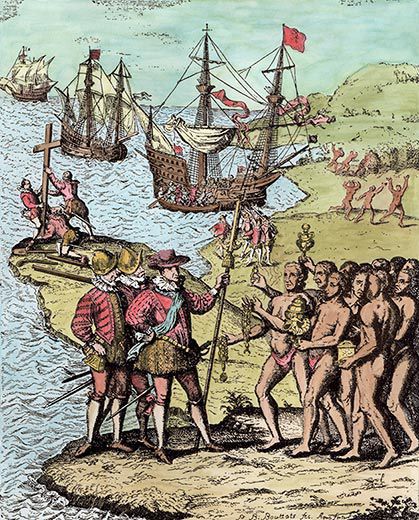
Theories of racial inferiority were developed during the formative period of capitalism in order to justify colonization. The church played a fundamental role in this process due to the divine authority which they were seen to have. Armies of pulpit propagandists were enlisted by stock companies to justify the merciless exploitation they would inflict upon Indigenous peoples. Their use of clergy for this purpose went as high as the Pope, who provided the legal and ideological framework for colonization through the Doctrine of Discovery in the 15th century. The doctrine asserted that any lands not inhabited by Christians were terra nullius, or “nobody’s land”, and were therefore available to be discovered and claimed.
The French were the first to push inland and established several outposts and settlements along the St. Lawrence River valley from the 1600s onwards, marking the beginning of the French fur trade empire. The Company of New France was chartered in 1627 and given a monopoly by the French Crown to manage the fur trade in the colonies of New France, in return for being responsible for settling new French Catholics in the colonies.
While the Spanish and Portuguese built their empires to the south on conquest and slavery, and the British colonists massacred Indigenous peoples to take their land, the French were never powerful enough to take the same approach in North America. Instead, French colonial policy was based on making alliances with Indigenous tribes they came into contact with.
However, their colonial practices were no more virtuous than other European colonizers. The French held an extremely paternalistic and derogatory view of the First Nations they made alliances with, viewing them as “savages” that needed to be “civilized”. The relationship between the First Nations fur trappers and the French traders was also one of exploitation, with the Indigenous locals being the ones to trek for miles and hunt animals for fur while the traders reaped the profits.
The French also used a divide-and-rule tactic and fanned the flames of fratricidal wars to make those they traded with even more dependent on them. While some of these conflicts were long-standing, European intervention transformed what had once been sporadic, local contests waged with bows and arrows into bloodier wars of mutual extermination with firearms which extended over vast territories.
The scope of these wars was directly connected to the manipulation and forced integration of Indigenous peoples into the developing capitalist world market. As Indigenous tribes became more and more dependent on fur trading with the colonial powers, conflicts over hunting and trapping grounds developed into deadly wars with entire tribes being wiped out. The series of military conflicts that lasted for decades throughout the 17th century are popularly known as the “Beaver Wars”, which in and of itself demonstrates that this was essentially a battle over very profitable capitalist markets.
The Haudenosaunee Confederacy refused to be made into a dependent “ally” of the French and were at war with them and their First Nations allies, the Huron-Wendat and the Algonquin, between 1640 and the 1660s. At one point the Haudenosaunee even seized Montreal and several key French outposts. While this resistance was eventually crushed by direct military intervention from France, it served to significantly weaken the colony. Unable to deal with ongoing conflicts with local First Nations as well as discontent from French settlers, the Company of New France surrendered its charter in 1663, making way for the British Hudson’s Bay Company (HBC) to become the dominant force in the fur trade.
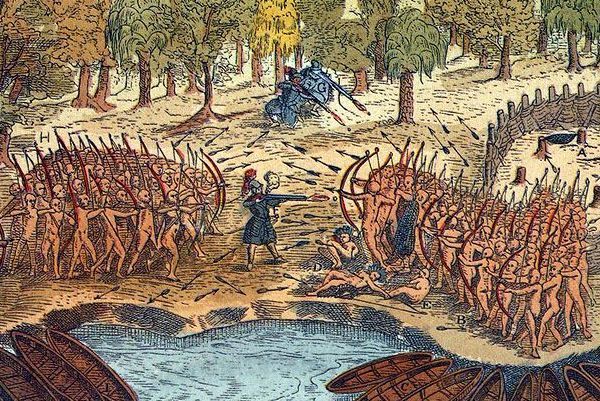
(Library & Archives Canada)
Another factor that weakened the French colony was continual war between Britain and France between the 1680s and 1750s, always pitting the colonies against each other. By the mid-18th century, Britain had laid the foundation for her industrial revolution and was emerging as a world capitalist power, while France remained fettered by feudal relations. This disparity was reflected in the colonies with the relatively low level of economic development in New France compared to the British colonies.
After the Seven Years’ War from 1756 to 1763, the British took over areas previously administered by the French. While the French had strategically made deals with Indigenous peoples in order to form alliances, the British approach was to treat them as a conquered people. This attitude was most graphically illustrated under British General Jeffrey Amherst, who thought that with the French out of the way, Indigenous peoples would be forced to accept British rule. Amherst took a hostile stance to Indigenous peoples and, especially after the Cherokee rebelled against the British in 1758, he started to restrict access to firearms and gunpowder for Indigenous peoples. In February 1761, in what was known as Amherst’s Decree, he ended the tradition of giving gunpowder and shot to chiefs as a diplomatic gesture of goodwill. This contributed to deteriorating relations between the Indigenous peoples and the British.
The British also refused to withdraw from areas west of the Allegheny Mountains, essentially occupying Indigenous land in the Ohio and Allegheny valleys. British generals were known for treating Indigenous people no differently than wild animals, following the lead given by Amherst. This enraged Indigenous peoples who banded together, waging a heroic war against the British colonial forces in 1763. More than a dozen Indigenous tribes, comprising thousands of warriors, united to drive the British colonizers from their land. This war became known as “Pontiac’s War” after the influential Odawa warrior who was one of the principal leaders of the Indigenous forces. This loose alliance of tribes destroyed eight forts, killing thousands of British soldiers and colonists and driving thousands more from their land.
While official accounts invariably speak of the brutality of the Indigenous peoples, the moral hypocrisy of the British colonizers is clear. Indigenous peoples were fighting back against an alien colonial force that was seeking to exterminate and replace them using the most underhanded methods. The latter’s brutal outlook was most graphically illustrated by Jeffrey Amherst himself, who argued for biological warfare saying: “Could it not be contrived to send the smallpox among the disaffected tribes of Indians? We must on this occasion use every stratagem in our power to reduce them.”
While the Indigenous tribes did not succeed in expelling the British, one of the results of this war was the Royal Proclamation of 1763, which stated that the Crown must negotiate and sign treaties with Indigenous people before land could be ceded to the colonies. The proclamation explicitly recognized that Aboriginal title to the land existed and that all lands would be considered Indigenous lands until ceded by treaty.
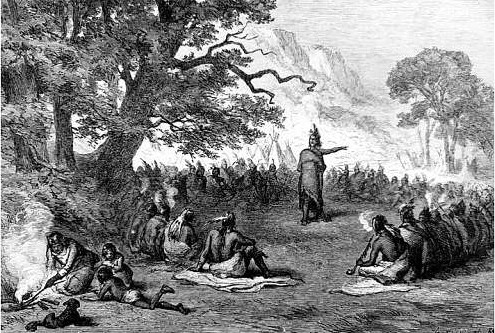
However, the purpose of the proclamation was not to protect Aboriginal title or rights. It was more of a cynical manoeuvre with the aim of restricting the growing power and independence of the American colonies, and was designed to guarantee the dominance of the British Crown by maintaining the state monopoly of ownership over the land.
According to the proclamation, only the Crown could acquire land from Indigenous peoples. The settlers were explicitly forbidden from claiming Indigenous land directly—it first had to be acquired by the Crown and then sold to the settlers. The whole idea was that the Crown was asserting its right to profit from and be the dominant force in the colonization and destruction of Indigenous peoples.
With France out of the way, the British Crown focused its efforts on curtailing the power of the nascent colonial bourgeoisie. This intensified conflicts which ultimately led to the American Revolution in 1765. Once again, the fate of Indigenous peoples was considered small change by the big powers, with each side making empty promises to enlist Indigenous allies.
The British Crown went on to break a number of promises to First Nations people and settled or sold unceded territories. For example, in return for fighting with the British against the Americans in the Revolutionary War, the Haudenosaunee Confederacy was promised the land lying six miles on each side of the Grand River which empties into Lake Erie. However, land grants were not upheld by the newly established Assembly of Upper Canada, and the Indigenous people of the Confederacy ended up with one fifteenth of the land previously promised. The settlement of Upper Canada was then carried out through a massive eviction of the First Nations people dwelling there.
With the Americans decisively defeating the British in the early 1780s, the American bourgeoisie adopted an even more aggressive policy than the British, expanding westward and disregarding any previous agreements the British had made with Indigenous peoples. Once again, Indigenous tribes united in what is known as the Northwest Indian War, fighting bravely and defeating the invaders on multiple occasions. Most notably at the Battle of the Wabash, an Indigenous army of Miami, Shawnee, Potawatomi and Lenape banded together and delivered the most decisive defeat ever suffered by the American military. They nearly wiped out the entire American force of 1,000 soldiers while suffering only minimal losses.
Indigenous peoples fought bravely against the colonizers on many occasions. In spite of this heroism, they were doomed to defeat in the long run. This is because at the end of the day, all other things being equal, the socioeconomic system with the higher productivity of labour will be victorious in any armed conflict. The American Revolution, which laid the political basis for unfettered capitalism based on industrial production, unleashed a development of the productive forces almost unparalleled in history. Confronted with this, the relatively underdeveloped economy of the Indigenous peoples, which had already been significantly distorted and weakened via the fur trade, did not stand a chance—in spite of the heroism and the desire to fight back. Indigenous chiefs obviously knew this fundamental truth as they forged alliances with the British against the Americans, in spite of the horrible track record of the British Empire.
During the War of 1812, First Nations support for the British against the Americans was again rewarded with betrayal. More than 10,000 First Nations warriors from the Great Lakes region and the St. Lawrence Valley participated in nearly every major battle. In exchange, Britain promised the Shawnee Chief Tecumseh a neutral Indigenous territory between the United States of America and British North America. But once the war was over, this promise was conveniently forgotten. After fighting in the war, First Nations were denied any recognition as parties to the peace, or as independent and sovereign peoples.
More thefts and betrayals

The birth of Canada in 1867 coincided with an historic theft of Indigenous territory. Having gained legal sovereignty over the vast West and North, encompassing eight million square kilometers, the Hudson’s Bay Company later sold these territories to the newly confederated Canadian state for £300,000 plus permission to retain 50,000 acres around the various trading posts. Unsurprisingly, the Indigenous people never saw a penny of this wealth and were never consulted. Canada’s first prime minister, John A. Macdonald, commented that the people living on this land were handed over “like a flock of sheep.” The company had simply sold the Crown stolen, unceded land.
The Hudson’s Bay Company had made £20 million in the fur trade (worth approximately £1.5 billion today). A large portion of this was sent back to England and invested in industry there, providing much of the basis for spurring on the Industrial Revolution which made Britain a major world capitalist power. However, a significant amount of this wealth would be reinvested in the other colonies and Canada as well.
The HBC would also use alcohol in the oppression and exploitation of Indigenous peoples in Canada. Alcohol was a high-profit item that was often consumed at trading outposts. This ultimately limited the purchasing power of Indigenous people and had the effect of undermining traditional community relations. Indigenous chiefs and elders resisted this detrimental trade, while HBC protected its monopoly on alcohol sales and profited massively. Alcohol was used to keep Indigenous people dependent. HBC traders often showed up with quantities of alcohol at peak hunting times in order to literally steal furs from intoxicated Indigenous traders. The use of alcohol in the fur trade profited HBC greatly, with social consequences which are still felt to this day.
With enormous profits from the fur trade and alcohol monopolies as well as the sale of stolen land, the Hudson’s Bay Company was essential in the formation of the Canadian bourgeoisie and capitalism in Canada. In fact, HBC was the starting point for the development of the big bourgeoisie in Canada in terms of land development, the railways, shipping and banking. Thus it is clear that the exploitation of Indigenous peoples was key to the development of Canadian capitalism, and provided the necessary basis for the formation of the nascent Canadian bourgeoisie.
Canadian capitalism built on the subjugation of Indigenous peoples
By the time of Confederation in 1867, the disappearance of fur-bearing animals and the development of industry and trade had brought about the end of the fur trade (except for some parts of the north). This led the new capitalist class to direct more attention to other resources in Canada and to establishing a home market. Capitalism in Canada now required land development to promote capitalist agricultural production and the development of industry and trade around the extraction of raw resources. These economic demands created the need for a pool of cheap labour, something the Canadian bourgeoisie generally lacked.
While the Hudson’s Bay Company had previously benefited from keeping Indigenous people nomadic and engaged in hunting and trapping rather than pushing them onto reserves, that policy now changed. Treaties were established between First Nations and the Crown to clear land for capitalist development and exploitation. Practices aimed at “civilizing the Indian” were established to break traditional forms of governance and communal property. The economic base of Indigenous society had been effectively eradicated through capitalist exploitation. For example, bison herds were all but gone by the 1880s, as the skins and hides of the bison were perfect for use as belts and other parts of the machinery used in the developing industry in central Canada and the east coast of the United States. Now the cultural elements of Indigenous society had to be destroyed as well. This is because the primitive communist mode of production and its corresponding family form were incompatible with the development of capitalism and had to be destroyed from the perspective of the capitalist class.

While Indigenous peoples viewed the land and natural resources as collective property, their very habitance on it was a barrier to capitalist development. Furthermore, the capitalist class required a pool of pliable labourers, disconnected from their traditional land and collective means of survival such as hunting, who could be exploited for profit. They also needed to destroy Indigenous culture and ways of life in order to assimilate Indigenous peoples into capitalist society and minimize any resistance. The acquisition and theft of Indigenous lands played an essential role in the primitive accumulation of capital in North America.
Beginning in 1828, a series of government reports, including the Darling Report, targeted agriculture as a means of forcing Indigenous people down the road to “civilization.” The idea was to confine Indigenous people on reserves, where they would learn to cultivate the land, become “good Christians” with the selfless help of the church, discover the virtues of individualism, and eventually become a malleable workforce. In this way they would establish permanent settlements, abandon hunting and develop subsistence agriculture, thereby ceasing to be an obstacle to the development of the land.
As part of this policy, Indigenous peoples, particularly in the West, were confined to reserves where they were forced to cultivate the land. However, the land set aside for them to farm remained the property of the Crown, and was often of poor quality. Nevertheless, many Indigenous farmers had some success in the 1880s, thanks to new farming techniques and the collective organization of the work. For example, in 1890, two farms on reserves in Prince Albert and Regina won the first prize in a wheat competition.
Faced with this prosperity, and under the pressure of white farmers who complained about competition from Indigenous farmers, the federal government adopted a series of measures to limit the development of Indigenous agriculture. Officially, these measures were taken on the pretext that Indigenous farmers should start by learning subsistence farming before moving on to commercial farming.
In 1881, the sale of agricultural products by Indignous people was restricted. Hayter Reed, the deputy superintendent of Indian Affairs, was responsible for the implementation of the Peasant Farming Policy in 1889, which hindered developing Indigenous agriculture. Reed was of the opinion that it was better for Indigenous people to learn to cultivate small plots of land than to engage in larger-scale commercial agriculture. Accordingly, this would restrict farming land and eliminate the need for labour-saving machinery. Reed argued that the peasants of other countries had farmed successfully for centuries with ancient hand tools and he thought that Indigenous people had to learn to use these tools and thereby advance through the historical stages of agricultural technique before being allowed to compete with white farmers. He forbade Indigenous people from purchasing agricultural machinery, and forced Indigenous farmers to use archaic hand tools.
With the implementation of the Peasant Farming Policy, Indigenous farmland was divided and allocated individually into 40-acre parcels of land to encourage individualism and private property and to undermine the collective spirit and sense of community. Once the parcels were distributed, the “unused” lands were then sold, thereby further reducing the size of the reserves.
Unfair treaties and the Indian Act
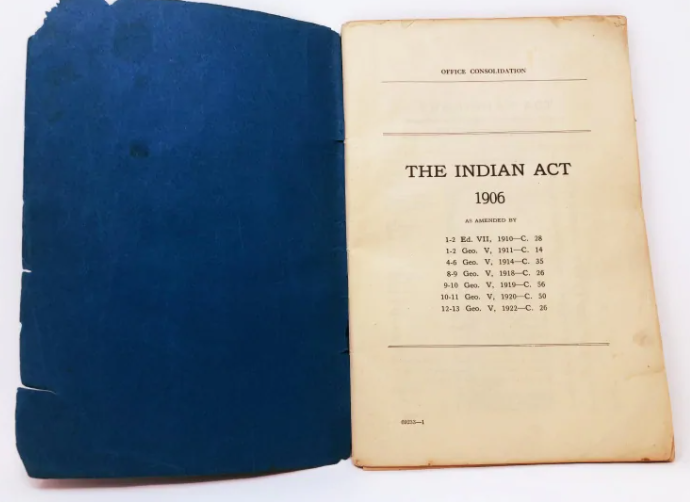
Treaties played an important role in preparing the land and Indigenous people for capitalist development. The legal basis for treaties was twofold: the British North America Act, which gave the Crown authority to deal with Indigenous people, and the Royal Proclamation of 1763, which stated that all legal title to land rests with the Indigenous peoples unless formally extinguished via treaty. This proclamation is the legal basis for the Aboriginal land title claims which Indigenous people use in their struggle to the present day. However, as previously mentioned, the Royal Proclamation was never intended to defend Indigenous land rights, but to prevent the colonies from acquiring land directly in order to ensure a monopoly on land for the British Crown. Much manipulation and misrepresentation was used during treaty negotiations to defraud Indigenous people from large swaths of their land and push them onto non-arable and lower-quality land.
The purpose of the treaties for the Canadian state was expressed by Indian Commissioner J. Provencher in 1873: “There are two modes wherein the Government may treat the Indian nations who inhabit this territory. Treaties may be made with them simply with a view to the extinction of their rights, by agreeing to pay them a sum, and afterwards abandon them to themselves. On the other side, they may be instructed, civilised and led to a mode of life more in conformity with the new position of this country.”
First Nations peoples entered such unequal agreements because they were under great pressure: the death toll from smallpox and other epidemic diseases was very high; several animals that were traditionally hunted for survival had gone extinct; and the Indigenous people in the United States had been brutally massacred. On the Prairies, railroad surveyors were at work laying out the right-of-way for the Canadian Pacific Railway and the state was preparing to forcefully clear First Nations and Métis people in the way of the development.
In 1871, after Canada assumed control in Red River, the Crown opened negotiations with First Nations for rights to the land, as per the Royal Proclamation of 1763 which was included in the articles of Confederation. Known as the “Numbered Treaties” or the “Post-Confederation Treaties,” this era of treaty-making ended in 1921 and began on the Prairies. It also included parts of the north and some regions in western Ontario. While First Nations in some regions of B.C. were included, this was not the case for the majority in the province who were not part of this treaty process.
During the first period of negotiations between 1871 and 1877, some First Nations negotiated and won important concessions based on the bitter experience of people who had signed treaties earlier in the process. For example, the terms of Treaty 6 included provisions that had not been negotiated in Treaties 1 to 5 such as the presence of a medicine chest to be kept at the house of the Indian agent on reserves, measures to protect from famine and disease, more agricultural supplies and the provision of education on the reserve.
That the chiefs signed the treaties should not be taken as an indication they were happy to do so, and serious protests by chiefs like Poundmaker at the signing of Treaty 6 were made. Rather, to the First Nations whose leaders agreed to the treaties, they were seen as a matter of necessity resulting from the loss of the economic foundation of their way of life.
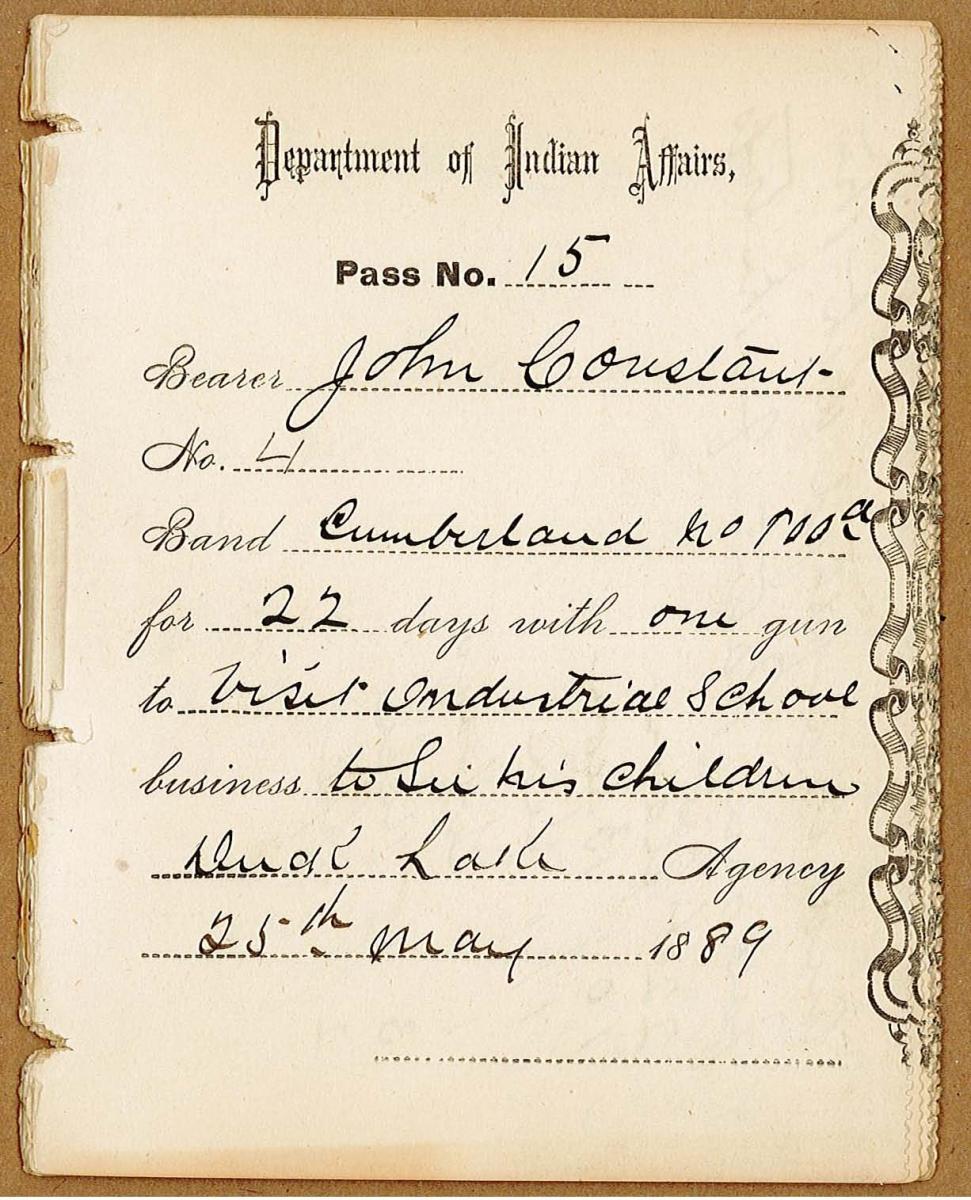
By the time of Confederation, all the basic features of Canadian policy towards Indigenous peoples were in place, but they were scattered over a series of statutes and lacked a consolidated administrative structure. With Confederation, control over all “Indian affairs” was assumed by the federal government. Statutory consolidation occurred with the Indian Act of 1876.
The Canadian bourgeoisie’s plan to convert Indigenous people on reserves into a cheap source of labour and source of agricultural surplus had largely failed up to this point. The Indian Act was an attempt to solve this problem and put Indigenous people on reserves under a system of land tenure to ensure control of on-reserve agricultural production.
The state had total control of the land, and hence the lives of people living on reserves. The state decided everything from what crops to sow to harvest time. It provided all the equipment and determined sales and prices. The income from sales went to the Department of Indian Affairs, supposedly to be spent on improvements on the reserves. In practice, Indian Affairs was a backwater department, with little supervision from Ottawa. According to author Heather Robertson, millions of dollars were misappropriated and misused in this way. Thus, in a certain sense the Indigenous people on reserves became agricultural labourers who worked for Indian Affairs. In this way the reserves indeed became a source of cheap labour as Indigenous people on reserves became employees of the state.
The Indian Act gave the new Canadian state sweeping powers over all aspects of the lives of First Nations people, including the legal authority to replace traditional forms of Indigenous governance, to forcibly relocate reserve land, to dictate criteria for Indian status and to ban spiritual and cultural practices. In place of traditional forms of governance, the band council system was imposed. The reserve and residential school systems were also introduced under the Act, which gave the federal government the power to expropriate reserve areas supposedly for the development of infrastructure and other public works.
The Indian Act forbade First Nations people from speaking their language and practicing their traditional religions. It forbade First Nations people from appearing in public in traditional dress and banned the potlatch in British Columbia and the Sun Dance in Alberta. The aim was to break up traditional ways of life to turn Indigenous people into a capitalist workforce as well as to clear land for capitalist development, such as the Canadian Pacific Railway.
The intent of this Act (which still remains in place today, having been amended several times but retaining its original purpose), was to subjugate and forcibly assimilate Indigenous people into bourgeois society in order to remove them as a barrier to the development of the land, resources, and capitalism in general. The whole idea behind the Act was to try to force Indigenous people to renounce their Indian status and assimilate into bourgeois society. In the time-honoured tradition of bureaucratic doublespeak, this process of forced assimilation was legally referred to as “enfranchisement”.
Under the Act a whole series of measures were adopted to this end, including provisions to destroy the matrilineal nature of many First Nations cultures. Other measures were designed to enforce “enfranchisement”. For example, any First Nations people admitted to a university were forced to renounce their status.
The Act also contained a series of political measures designed to politically control Indigenous peoples. The Act forbade the formation of political organizations by First Nations people and denied them the right to vote. Until 1960 First Nations people could vote in federal elections only if they renounced their status. The Act prohibited anyone (both First Nation and non-First Nation people) from raising funds for First Nations legal claims without a special license from the superintendent general of Indian Affairs. This move was designed to prevent First Nations from pursuing land claims.
From 1885 until the 1940s a pass system was in place to control the movements of First Nations people and keep them on reserves. First Nations people living on reserves were forced to obtain permission in writing from an Indian agent if they wanted to leave the reserve. If caught off reserves without one of these passes, they were either incarcerated or forcibly returned to the reserve. This policy was put in place with the outbreak of the North-West Rebellion and was designed to prevent the spreading of insurrection.
The Riel Rebellions and their aftermath
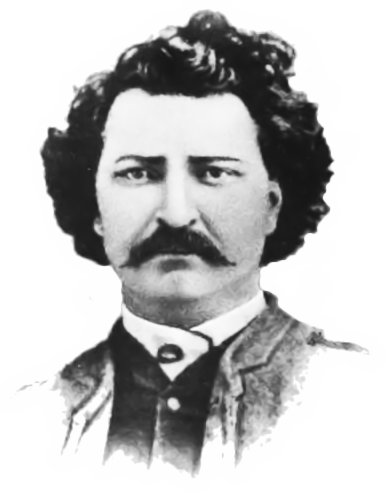
Perhaps the most important episodes of resistance to the seizure of First Nations and Métis lands are the Red River Rebellion of 1869-1870 and the North-West Rebellion of 1885, both associated with the name of the great martyr, Louis Riel.
The Métis Nation is a culturally distinct Indigenous group whose origins began with the children of various European and Indigenous peoples. The Métis Nation is geographically diverse but maintains unique culture, traditions, languages (like Michif and Bungee), way of life, collective consciousness and nationhood.
The Red River settlement, located in today’s Manitoba, was inhabited by just over 10,000 people in 1871, mostly Métis with almost an equal number of francophones and anglophones. The settlement was founded by Scottish settlers in 1812, but was dominated by the HBC, which had possessed the fishing and hunting rights throughout all of Rupert’s Land since 1670—although the land belonged to First Nations and Métis. In 1836, the control of the colony was formally surrendered to the HBC, which they ruled from 1836 to 1869.
However, the British imperialists and Canadian colonial state feared that if nothing was done, especially with the pressure from the United States, the territory of Rupert’s Land would be annexed by the United States. Moreover, the interests of developing Canadian capitalism (and also the interests of the Crown) demanded that the country be linked from coast to coast. The Legislative Assembly of the Province of Canada resolved that, “In view of the speedy opening up of the territories now occupied by the Hudson’s Bay Company, and of the development and settlement of the vast regions between Canada and the Pacific Ocean, it is essential in the interests of the Empire at large, that a highway extending from the Atlantic Ocean westward should exist, which should at once place the whole British possessions in America within the ready access and easy protection of Great Britain…”
At root, the driving force of this conflict was a change in the material relations of production. As Howard Adams explains: “the trouble was the conflict between two different economic systems—the old economic system represented by the Hudson’s Bay Company and the new industrial system.” He continues: “The clash of these two economic systems fueled the hostilities of 1869-70 in the Northwest, which resulted in Rupert’s Land being brought under the constitutional authority of the government in Ottawa, the seat of the industrial empire.”
At the top, the rulers of the HBC simply changed seats, with principal shareholder Donald A. Smith transferring his capital to railways, banks and other industries. John A. Macdonald’s government was filled with former HBC directors like Smith, who recommended annexing the North-Western Territory so they could expand their own industrial empire and build a capitalist nation state. Matters were, however, somewhat different for the people living in this vast territory who now had their land and entire way of life threatened.
The Rupert’s Land Act of 1868 authorised the land transfer and the deal was signed and became effective on July 15, 1870, with the stipulation that treaties would be signed with Indigenous nations. At the time Métis were not legally recognized as an Indigenous people by the Canadian government, and not included in the “Indian Act” or assumed to be covered by the provisions of the Royal Proclamation of 1763. It was not until 2003 in the landmark Powley decision that Métis received such acknowledgement. Naturally, in 1870, the HBC and the government negotiated without seeking the opinion of the Métis. This would fuel the anger of the Red River Métis.

(Library & Archives Canada)
As mentioned previously, HBC surrendered Rupert’s Land (which amounts to one-third of current Canadian territory) for £300,000 pounds ($1.5 million), which was a very cheap price at the time. The historian W.L. Morton says: “One of the greatest transfers of territory and sovereignty in history was conducted as a mere transaction in real estate”.
The transfer of territory was to be implemented on December 1, 1869. The Métis of Red River started to organize against this “annexation without consultation” in October that year by forming the Métis Committee, with John Bruce as president and Louis Riel as secretary. In November, Riel led a group of some 400 armed riders to seize Fort Garry, a strategic point in the settlement. The Red River Rebellion had begun.
In December, a provisional government was formed by the Métis, the Legislative Assembly of Assiniboia, which drafted a list of terms for entry into Confederation. Faced with a revolutionary democratic movement, the Canadian government temporarily renounced taking control of the territory. The Métis, by revolutionary action, had established a bourgeois-democratic government and inflicted a humiliating blow on the Canadian ruling class and British imperialists. Interestingly, this was a united struggle of English and French Métis, where the linguistic rights of both groups were to be guaranteed by the new government.
The Métis issued a List of Rights to be presented to Ottawa. The Canadian state, while preparing to receive the delegates of the provisional government, was also preparing to repress the movement.
In May 1870, after negotiations between the provisional government and Ottawa, the Manitoba Act was passed, creating the province of Manitoba. However, in the following months troops were sent to re-exert the authority of the federal government, suppress the provisional government, and crush the rebellion. Prime Minister John A. Macdonald said in a letter that, “should these miserable half-breeds not disband, they must be put down.” In August 1870, British and Canadian troops arrived at Fort Garry to take control. Riel, rightly fearing that he would be lynched, escaped to the United States.
This is an example of the typical behaviour of the Canadian ruling class towards First Nations and Métis people since day one—a mix of feigned conciliation and repression. In a similar fashion, Justin Trudeau today can talk about “reconciliation” at the same time as the RCMP is sent to repress the Wet’suwet’en in British Columbia. In this manner, Trudeau is simply continuing the same policy the Canadian ruling class has pursued for centuries.
The Canadian ruling class was able to put down the Red River Rebellion and move ahead with the construction of the Canadian Pacific Railway. While a transcontinental railway was a condition of British Columbia’s entry into Confederation, this was also a lucrative endeavour for which there was intense competition among the ruling class. That is to say, it all boiled down to profit in the end. In 1872, shipping magnate Sir Hugh Allan was granted the contract. It was soon discovered that he had donated $350,000 to the Conservative Party before being awarded the contract, forcing Macdonald’s government to resign in 1873 (he would return to power in 1878).
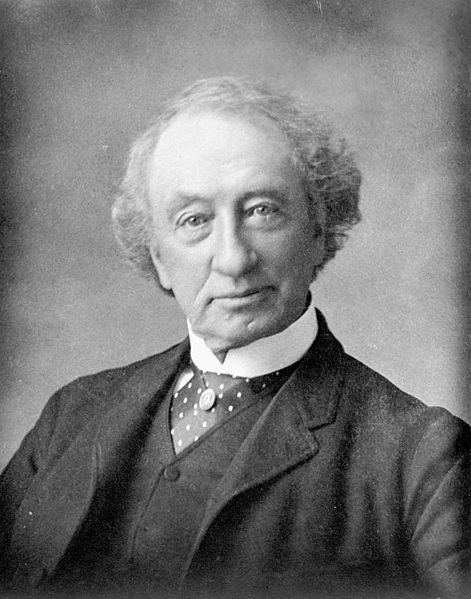
To protect profits, John A. Macdonald deliberately starved thousands of Indigenous people to clear a path for the Canadian Pacific Railway and open up the Prairies to white settlement. He ordered officials in the Department of Indian Affairs in Prince Albert, Saskatchewan to withhold food rations from First Nations until they moved to federally designated reserves far off the path of the railway. The First Nations were faced with starvation and were trapped on reserves from which they could not leave without the permission of a government Indian agent. Living conditions on the reserves were abysmal. But if the Indigenous people forced onto them complained about food rations, which were already substandard, they would find that their rations would be cut even further.
Historical records show that this practice was an explicit directive from Macdonald to federal officials. There are also public records of Macdonald bragging about keeping the Indigenous population “on the verge of starvation” in order to save government funds. One Canadian historian, James Daschuk, tracked a food shipment contaminated with tuberculosis which had resulted in a deadly outbreak back to an American company in which a senior official in the Canadian state had a major financial stake. Daschuk concluded, “the uncomfortable truth is that modern Canada is founded upon ethnic cleansing and genocide.”
However, the crushing of Indigenous peoples in the pursuit of profits was not achieved without a fight. Both the Métis and the Indigenous groups of the West put up a courageous fight against the Canadian state, notably again during the North-West Rebellion of 1885.
The origins of the North-West Rebellion can be traced back to the defeat of the 1869-70 Red River Rebellion. With the Manitoba Act of 1870, the Canadian government had promised to give 1.4 million acres of land to Métis families. However, bureaucratic delays slowed down the process and this measure was never implemented fully. In addition, settlers coming from the East were allowed land even before the Métis, which showed that the government had a heavy bias against the Métis. Two-thirds of the Métis, frustrated by the broken promises of the Canadian state, fled the province, with most of them moving westward and establishing settlements in what today is Saskatchewan.
With the development of agriculture and the advance of the Canadian Pacific Railway, there was a steady decline in the buffalo population. The Métis felt that their traditional semi-nomadic culture based on buffalo hunting was threatened, and they sent a petition to the government in 1874 for action to be taken, but to no avail. There were similar grievances coming from various Indigenous groups. The Canadian government, however, wanted to force the Indigenous population to abandon their nomadic life and establish themselves in villages based on agriculture. The Indigenous peoples on the reserves saw their food rations cut in 1883, which naturally added to the anger and discontent.
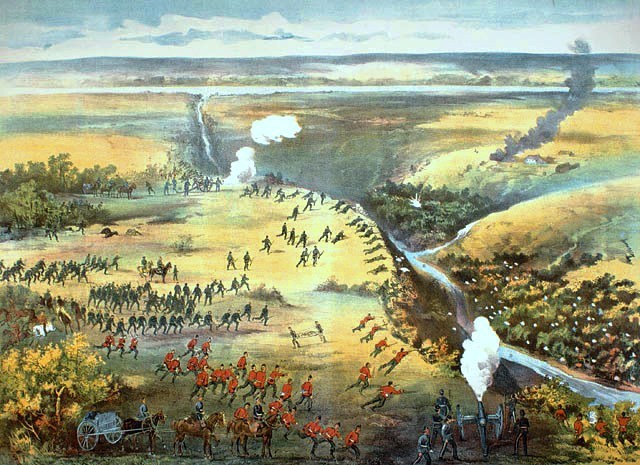
The white settlers of the West also had their own grievances. They were promised a life of prosperity by moving west, which never came. Representatives of the Métis, the First Nations and the white settlers met in May 1884 to discuss how they should confront the federal government. They decided to ask Louis Riel to come back from his exile in the U.S. to help them in their struggle. On the basis of the unity of all the exploited classes and oppressed peoples of the West, there was great potential for a successful revolutionary movement against the Canadian state.
In December 1884, a petition was sent to the government with all the demands of the Métis, First Nations and white settlers. The government’s response was to set up a public inquiry to investigate the problems. This was seen as another empty gesture, and under the leadership of Riel, a new rebellion erupted. On March 18-19, an armed Métis group formed the Provisional Government of Saskatchewan with Riel as president. The rebellious Métis and First Nations scored a victory in a battle on March 25-26 against the North-West Mounted Police, the forerunner of the RCMP, which had been established in 1873 to maintain order in the West and crush Indigenous resistance.
This victory encouraged other First Nations to join the movement. However, the Canadian government wasted no time and quickly moved to regain control. No less than 5,000 men were sent by Ottawa to put down the rebellion. Racist hysteria was whipped up by the ruling class in the press with dire warnings about “Indian outrages” that needed to be stopped. This campaign succeeded somewhat in dividing the population and turning some of the white settlers against the armed struggle. On May 15, Riel surrendered and in June the rebellion was over.
It is revealing to note that the first war in history waged by Canadian troops without British soldiers assisting was here, in Canada, against the Métis and First Nations protesting and resisting mistreatment by the Canadian state. Once again we can see that the Canadian state and its coercive police apparatus are founded on the subjugation and violent suppression of Indigenous peoples’ sovereignty.
The subsequent trial of Riel caused massive division amongst the Canadian population. The fact that Riel was given a death sentence while the lives of other rebel prisoners were spared was a cynical political manoeuvre. In a classic divide-and-rule move, Macdonald, the Conservative prime minister, was seeking the support of the anglophone population at the expense of francophones and people in Quebec. Propaganda was spread claiming that Riel was a traitor. The trial was seen in Quebec for what it was: an example of the oppression of francophones by the Canadian state. The jury was entirely composed of anglophones. Macdonald infamously said about Riel, “He shall die though every dog in Quebec bark in his favour.”
And this is what happened. Louis Riel was hanged on November 16, 1885 in Regina. His execution caused an outpouring of anger in Quebec. A massive demonstration of 50,000 people was held on November 22 in Montreal, the biggest demonstration in the history of Quebec at the time. On November 27, six Cree and two Assiniboine warriors were also hanged.
From the bourgeois perspective, Louis Riel is today considered one of the most controversial figures of Canadian history. For our part, we are proud to consider Riel as part of our revolutionary heritage. His struggle to resist the Canadian state and for the rights of the oppressed Métis people is an inspiration for us today.
Residential schools: Tools of cultural genocide
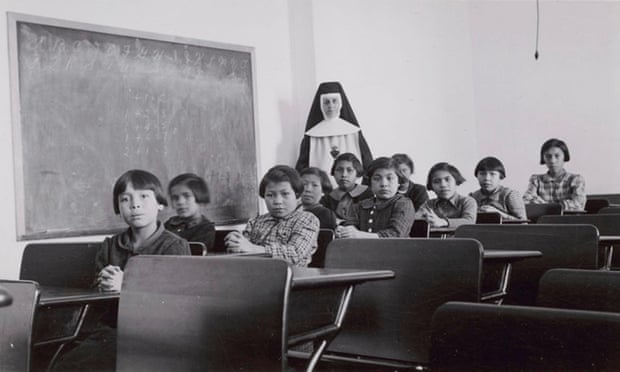
While genocidal and violent tactics were used in the face of resistance, the Canadian state’s preferred policy was still assimilation. This is because a pool of labourers was largely lacking in Canada. Canada never developed a large slave trade and settlement was insufficient to meet the needs of capitalist development. Therefore the capitalist class reasoned that the Indigenous people could be broken and assimilated to serve their needs. One of the main tools toward this end was the horrific residential school system.
Missionary schools run by the church had been in operation as early as the early 17th century in order to “civilize” Indigenous children by imposing the Christian faith on them. The new federal government began making small per-student grants to many of the church-run boarding schools in the 1880s and dramatically increased its involvement in residential schooling.
The purpose of the schools was not to educate, but to break Indigenous children’s link to their culture and identity. This is why the Truth and Reconciliation Commission of Canada (TRC) concluded in its 2015 report that the residential school system amounted to cultural genocide. The Canadian government pursued this policy of cultural genocide because it wished to relieve itself of its legal and financial obligations to Indigenous people and gain control over their land and resources. If every Indigenous person had been assimilated there would be no reserves, no treaties and no Indigenous rights. Furthermore, by breaking children’s link to their culture and traditions, the hope was to turn to them into malleable wage labourers upon graduation instead of relying on their traditional forms of survival. Even though the last residential school closed in the 1990s, breaking the link between Indigenous people and their culture, language and traditions is a continuing imperative for Canadian capitalism. This can be seen in the chronic underfunding of things like First Nations education, health care, and the intolerable conditions on reserves and amongst the urban poor.
From the 1870s until the last school closed in 1996, at least 150,000 First Nations, Métis, and Inuit children attended residential schools in Canada. The Indian Act gave Indian Affairs the power to forcibly remove children from their homes; these children were essentially kidnapped. Inuit and Métis people are not governed by the Act, but at various points in time their children were enrolled in either federal schools or in provincial ones with similar intents and policies—often in partnership with the Church.
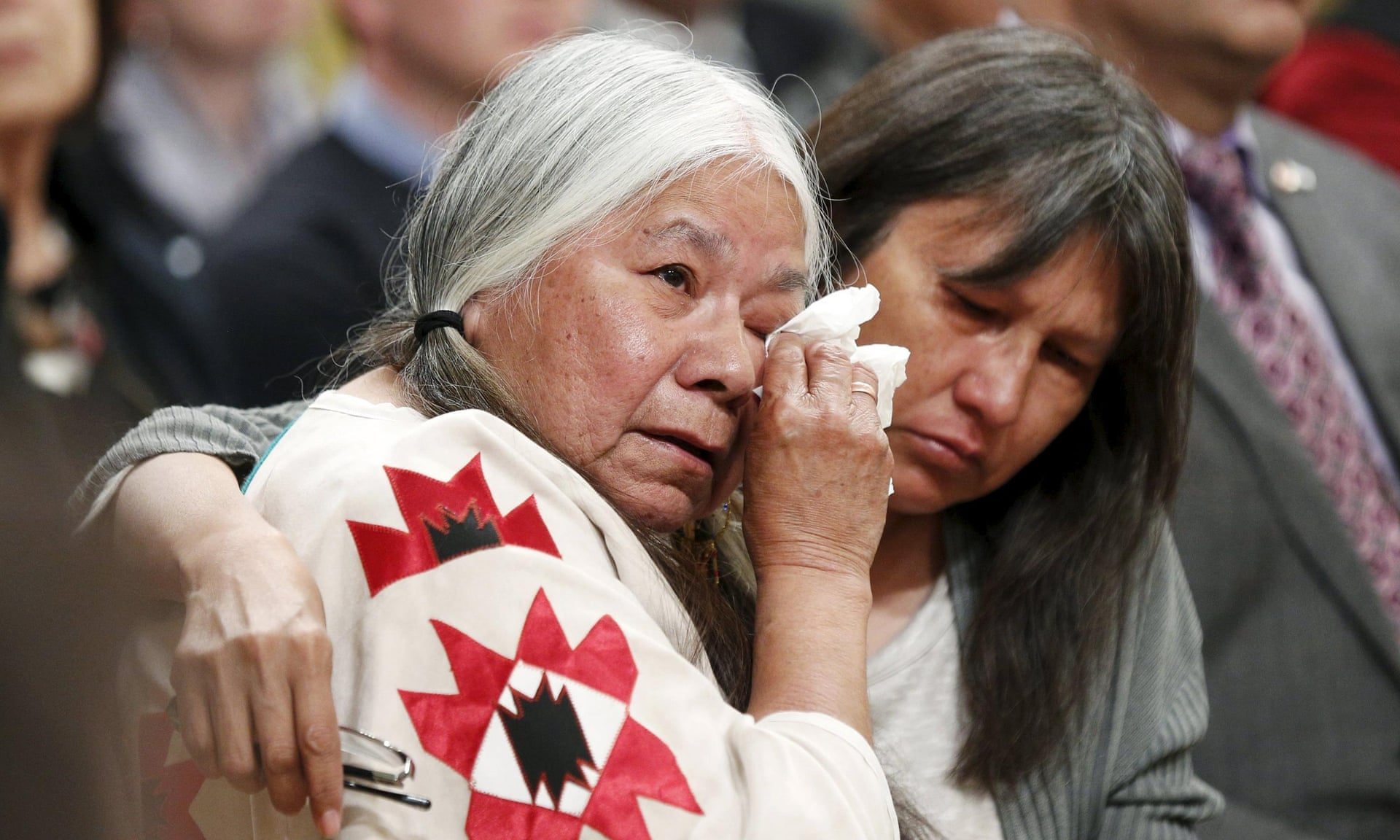
More than 130 government-funded, church-administered schools existed across the country, with the express purpose of “civilizing” Indigenous children—tearing families apart and leaving scars that continue to be passed on generationally. The conditions of the schools and the treatment of the students was horrific.
Spiritual and cultural practices were banned and the children were not allowed to speak their own languages. In a dehumanizing fashion they were referred to by numbers in many schools. Punishment of children for misbehaviour was often brutal and abusive. There are reports of children being lashed, beaten, having their heads shaved, being locked in small confinement cells for weeks at a time, given diets of water and bread, and having their pants pulled down and publicly shamed. Physical and sexual abuse was rampant.
At least 3,200 children who attended the schools never returned home. Records were regularly destroyed, suggesting that the actual number of students who died may have been far higher (between 1936 and 1944 alone, 200,000 Indian Affairs files were destroyed). Causes of death included disease (50 per cent tuberculosis), fires, and suicide, with many children dying of exposure while trying to escape. Poor health care and nutrition were the norm. Government and church officials were made aware of the problems many times and nothing was ever done to stop the abuse. This is because the abuse was both implicit and explicit in the design of the residential school system.
Returning home after years separated from their families and unable to speak the language of their elders, students became alienated from their traditional communities. They did not receive the nurturing care that children need to develop healthy relationships in their adult lives, leading to cycles of violence and mental health challenges passed down from generation to generation. This is what is known as intergenerational trauma, and its impacts on Indigenous communities have been devastating.
The Truth and Reconciliation Commission traced a direct connection between the intergenerational trauma suffered by Indigenous families over the course of more than a century and social problems faced by Indigenous communities today such as poverty, homelessness, violence, high rates of health problems, incarceration, mental health challenges, and drug and alcohol addiction.
The White Paper
While the last residential school would not close until 1996, state policy shifted from the 1950s onwards towards what was termed “integration”. The 1951 amendments to the Indian Act emphasized measures for integrating services for First Nations peoples with services for all Canadians, including phasing them into the mainstream school system.
The final step in this policy of “integration” was introduced in 1969, when the federal government under Pierre Trudeau issued what became known as the White Paper and announced its intention to absolve itself of responsibility for Indigenous affairs through the repealing of the Indian Act.
In keeping with Trudeau’s vision of a “just society”, the federal government proposed repealing legislation it considered discriminatory. The Trudeau government viewed the Indian Act as discriminatory, not for example because it was the legislative framework that governed the destruction of Indigenous communities and genocide of Indigenous peoples, but because it applied only to Aboriginal peoples and not to Canadians in general. The Trudeau government thus proposed ending the special legal status of First Nations peoples and dismantling the Department of Indian Affairs in the name of “equality”.

The White Paper stated that removing the unique legal status established by the Indian Act would “enable the Indian people to be free—free to develop Indian cultures in an environment of legal, social and economic equality with other Canadians.” In addition to the elimination of Indian status for First Nations and the dissolution of the Department of Indian Affairs, the White Paper proposed transferring responsibility for Indigenous affairs to the provinces and integrating these services into those provided for the general population. The White Paper also proposed the privatization of reserve lands such that it could be sold by the band and/or its members.
There was significant opposition to the White Paper on the part of First Nations peoples. While many recognized the Indian Act as a racist and colonial piece of legislation, they did not want to lose the few rights they were guaranteed under it. Firstly, the White Paper had completely ignored the issues and concerns raised by Indigenous leaders during the consultation process for the paper. Many Indigenous peoples viewed the White Paper as the finishing stroke in the long-standing goal of the Canadian ruling class and state to assimilate Indigenous peoples into bourgeois society. Many correctly saw it as leading directly to cultural genocide and saw it as a crass attempt on the part of the federal government to “pass the buck” to the provinces. It was seen as an attempt by the Canadian government to absolve itself of responsibility for historical injustices.
The White Paper was considered a slap in the face by many Indigenous people. While many would have been happy to see the end of the Indian Act and the Department of Indian Affairs, and along with them centuries of oppression, many viewed the White Paper as an attempt on the part of the federal government to walk away from its obligations under various agreements and treaties. The lives of Indigenous peoples had been completely governed and dominated by these accords, and as oppressed peoples they were never in a position to simply walk away from them. They could not simply ignore the federal government or the terms of Indian Act, as these defined their very existence. For the federal government now to simply walk away from its historical obligations, all the while preaching “equality” and the privatization of reserve lands, was more than an insult.
Eliminating status for First Nations and transferring responsibility for Indigenous affairs to the provinces essentially amounted to placing reserves on an equal footing with municipalities under Canadian law. Many reserves, if not most, are not economically viable and could not compete with other municipalities for jobs and investment. The result would be an emptying out of the reserves as people left to find work in the cities. After centuries of economic strangulation of the reserves by the federal government, the White Paper—by now trying to equalize them with other municipalities while offering no legal or economic protection for reserve residents—was correctly seen by many Indigenous people as an attempt to destroy the reserves and force Indigenous people into the cities. This was in reality a type of Enclosure Act, and can only be understood as forced assimilation and genocide.
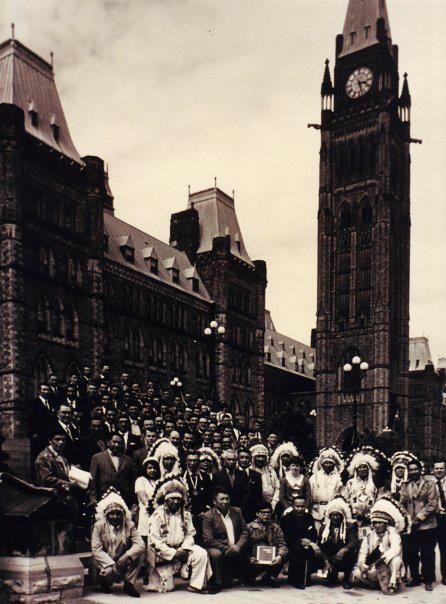
The White Paper also sparked a new era in political organizing in Indigenous communities. Harold Cardinal, a young Cree man who was head of the Indian Association of Alberta, responded to the White Paper with a book called The Unjust Society exposing the hypocrisy of Trudeau’s so-called “just society.” Cardinal stated openly that the White Paper was “a thinly disguised programme of extermination through assimilation” and viewed it as a form of cultural genocide. In 1970, the Indian Association of Alberta rejected the White Paper in a document called Citizens Plus, which is also known as the Red Paper. The Red Paper became a central position around which Indigenous opposition to the White Paper galvanized.
In British Columbia, the controversy over the White Paper sparked a new period of political organizing. In November 1969, three Indigenous leaders, Rose Charlie, Philip Paul, and Don Moses brought together 140 tribal leaders—the largest meeting of tribal leaders to that point. They met to develop a collective response to the White Paper and in turn founded the Union of British Columbia Indian Chiefs (UBCIC). The UBCIC issued its own rejection of the White Paper in a document called the “Brown Paper” which still forms a cornerstone of its current policy.
As a result of First Nations opposition, the White Paper was formally withdrawn in 1973. This had the effect of strengthening First Nations organizations across the country, particularly the National Indian Brotherhood, which would later form the Assembly of First Nations.
One of the first acts of a socialist government in Canada would be to repeal the Indian Act. Getting rid of this oppressive piece of colonial legislation would be one of the first steps towards ending centuries of oppression of Indigenous peoples. However, Indigenous people themselves must play the decisive role in this liberation from colonial oppression. A socialist government could not act unilaterally in this regard and must act in full unity with Indigenous peoples. In repealing the Indian Act, we would guarantee full rights to Indigenous peoples on and off reserves and work in unison with Indigenous peoples in developing a plan to end colonial oppression. Under socialism, the way forward will be determined by Indigenous peoples themselves, especially in relation to the Indian Act and the future of the reserve system. To be sure, it would be just as criminal and oppressive to force Indigenous people off reserves as it was to force them there in the first place.
From Red Power to today
In the context of the general societal radicalization of the 1960s and 1970s, there was also an upturn in the Indigenous movement. The White Paper only added fuel to the fire. The period of the late 1960s and early 1970s was a revolutionary era with mass movements and revolutions all over the world, and Indigenous people drew direct inspiration from many of these movements. The movement that developed in North America at the time was generally known as the Red Power movement. This movement was globally influenced by the civil rights movement, the anti-war movement, and the American Indian Movement (AIM) in the U.S.
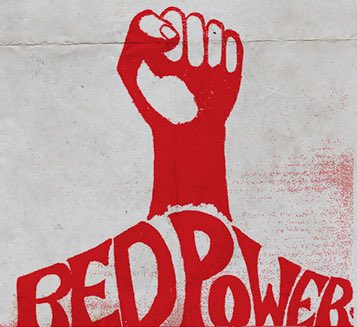
But the movement in general was far from homogenous. Like any struggle of an oppressed group, there were various approaches which ultimately stemmed from different class outlooks. At first, the movement was based on identity, centred around Indigenous unity for common cause against the “white man.” But many Indigenous leaders under the radicalization of events were pushed to the left, with a layer identifying with revolutionary Marxism. The need to broaden the struggle out to non-Indigenous people, and to link it to a broader fight against capitalism, were also being openly explored and debated.
A clear divide within the Indigenous movement was also exposed. The most well-known Indigenous Marxist, Howard Adams, was active fighting against a layer of petty-bourgeois Indigenous bureaucrats. He describes this in his best selling book Prison of Grass:
It is common practise of imperial governments to use middle-class native elites to provide support for their administration. Middle-class society, which shares the same value system and ideology as the ruling class, provides political stability for the capitalist system. Therefore, as soon as natives start action towards liberation, governments make serious efforts to bring native leaders into middle-class society. After these leaders are co-opted, they become supporters of the government and of the colonial rule that suppresses their people.
Adams describes how these “uncle tomahawks” were nurtured with the growth of government grants and reliance on white advisors who teach them to be subservient.
This layer of petty-bourgeois Indigenous bureaucrats acted as a brake on the movement. Against this trend, a young layer of Indigenous Marxists developed throughout the 1960s and helped to found rival organizations to push for more militant tactics. Métis activist Malcolm Norris was a Marxist and a founding member of the Métis Association of Alberta. His friend and collaborator James P. Brady was a member of the Communist Party of Canada. There is suspicion that Brady was assassinated for his political activities after he disappeared while out prospecting.
Many Métis and Indigenous militants drew openly revolutionary conclusions and sought to link up the Indigenous struggle with the rest of the working class in a fight for socialism. Cree activist Vern Harper, who was a leader of the movement in Ontario, said that “There’s a more militant and revolutionary theme emerging, which is beginning to get support from all elements of the native movement…Native and non-native people are seeing that capitalism doesn’t serve the masses. It only protects the capitalists’ interests…” Harper organized the Native People’s Caravan which traveled from Vancouver to Ottawa to “welcome” Trudeau’s re-election in 1974. This peaceful march was violently repressed by riot police. Just prior to this, Harper had run for the Marxist-Leninist Party in the federal riding of Toronto Centre.
There were a series of occupations of government and Indian Affairs offices across Canada at this time, complemented by several roadblocks. One of the key events was the occupation of Anicinabe Park in Kenora, Ontario in July 1974, where for the first time in this period arms were used by First Nations people to assert their rights and protect the occupation. This occupation, organized by the Objibway Warrior Society, lasted 39 days and involved a standoff between 100 First Nations participants and police, resulting in dozens of arrests. During these events, a wave of racism was whipped up, accompanied by claims that Indigenous militants were all communists. This was probably not so far from the truth.

The “uncle tomahawk” leaders of the main First Nations political bodies such as the National Indian Brotherhood and the provincial Indian associations spoke out against the action as condoning violence. Even leaders like Harold Cardinal recoiled when faced with the militancy of ranks in the movement. As the radical Indigenous movement subsided, these layers, free from the pressure of the mass movement, moderated even further, developing into a stable group of petty-bourgeois and bourgeois natives. Many of these people ironically moved into the orbit of the Liberal Party, as Cardinal himself did in 2000, running unsuccessfully on the Liberal Party ticket.
In the United States, this situation developed into a split in the American Indian Movement with a well-known AIM leader, Russell Means, resigning from a right-wing perspective. The AIM Grand Governing Council issued a declaration distancing the group from Means, criticizing him for going to Nicaragua to support the “Miskito Indians who were allied with the anti-revolutionary Contras,” as well as his “recent forays into conservative politics.” Means had joined the Libertarian Party and had famously criticized Marxism, saying that “Marxism is as alien to my culture as capitalism.”
Another debate emerged between some First Nations men and women. First Nations women were discriminated against under Sec. 12 (1) (b) of the Indian Act, whereby First Nations women who married non-First Nations men lost their status as registered Indians (whereas First Nations men who married non-First Nations women did not). Anishinaabe community worker Jeannette Corbiere Lavell took the case of discrimination up legally. In 1974 she went to the Supreme Court of Canada to challenge the Indian Act and lost the case, which led her to form the organization Indian Rights for Indian Women. This particular struggle was later won, at least formally according to bourgeois law, through Bill C-31 which was passed in 1985.
This so-called victory, however, still has a lot of problems. The 1985 amendment to the Indian Act introduced a “second-generation cut-off” clause based entirely on the racist concepts of blood quantum, historically used by the North American ruling class to divide Indigenous communities, restrict and reduce Indigenous numbers, and essentially commit cultural genocide. The 1985 amendment divides those with status into two groups: those with full status (referred to as 6-1) and those with half status (referred to as 6-2). A child of a marriage between a full status (6–1) person and a non-status person qualifies for half status (6-2). If that child grows up and in turn marries a non-status person, the child of that union would be non-status. If a person with half status (6–2) marries a person with full status (6–1) or another person with half status (6–2), the children revert to full status (6–1). This means that many people are excluded from status, meaning they cannot be band members—which in turn determines who can live on reserves, who can run for political positions and who has access to education and other funding. While questions of status and funding are the fundamental issue today, this “second-generation cut-off” will lead to a future crisis. As Pam Palmater, a Mi’kmaw lawyer of the Eel River Bar First Nation explained, “There is a long-term effect of this type of legislation: that every single First Nation in Canada effectively has an extinction date, a day when that Nation’s last registered Indian is born. This is a looming reality for some First Nations, who face legislated extinction in 50 years or less.”
The Native Women’s Association of Canada reported that five years after the introduction of Bill C-31, only two per cent of reinstated women had returned to their reserves. Furthermore, components of Bill C-31 continue to discriminate against Indigenous women. Status Indians are not afforded the right of equal division of matrimonial property on reserves, and property allocations are still determined by patrilineal descent which means that women who separate from their partners often lose their homes. This forces women off reserves, excludes them from decision-making power and resource access on reserves, and perpetuates their social and economic disadvantage.

(Shaney Komulainen/Canadian Press)
A rift had opened up between the Indian Brotherhood and Indigenous women activists and organizations. The Indian Brotherhood resisted women’s attempts to amend the Indian Act, arguing that this could open up the door for other “unwanted” amendments. Essentially they demanded that Indigenous women put their needs on the back burner, which sowed division and weakened the movement. This shows one of the many ways that the oppressed and exploited are kept divided on the basis of gender, sexuality, ethnicity and so on and how such division only serves the interests of the oppressor. The movement as a whole would have been strengthened if Indigenous men and women fought together.
While this wave of resistance eventually ebbed, it would be far from the end of Indigenous struggle. There were multiple struggles throughout the 1990s and 2000s such as militant standoffs in Oka (1990), Ipperwash (1995), Gustafsen Lake (1995), and Burnt Church (1999). In 2006 we saw the Six Nations occupations followed by the national days of action in 2007 and 2008 which led to Indigenous activists blockading stretches of Highway 401 and the CN railroad between Toronto and Montreal. Leaders of these actions were often rounded up and arrested. The scope of this document does not allow an in-depth look at each of these struggles, but in each case Indigenous people have shown a militant, fighting spirit that points to the revolutionary potential of this layer of society.
Continued oppressive conditions gave rise to a new movement in 2012, Idle No More. This new wave of protest was sparked by the Conservative Party’s Bill C-45, which threatened environmental protections and Aboriginal treaty rights, resulting in mass demonstrations across the country. This struggle was embodied in the hunger strike of Attawapiskat Chief Theresa Spence, protesting the appalling living conditions and housing crisis on the Attawapiskat reserve. The movement eventually died down, but undoubtedly brought Indigenous issues to the forefront of the political arena, serving to politicize many young people, both Indigenous and non-Indigenous.
Class divisions in the Indigenous community
Over time, the assimilation of Indigenous peoples into the system of capitalist relations has created class divisions in Indigenous communities on and off reserves. Some segments have used programs and benefits won from the government to get ahead and become integrated into Canadian society. Similar to the Black population in the United States, a thin layer of petty-bourgeois and bourgeois Indigenous people has been created. These people often control the band councils and the Assembly of First Nations, and their interests are increasingly divorced from the rest of the community. This has proved a useful tool for Liberal and Conservative politicians who base themselves on the more well-off layers, who can then attempt to rein in any movements should they go too far.
These developments have even led to a class struggle within the Indigenous communities. For example, there was the situation at a highly profitable casino near Port Perry, Ontario which is run by the Mississaugas of Scugog Island First Nation. In 2003 the 1,000 Indigenous workers at the Great Blue Heron Casino filed for unionization with the Canadian Union of Autoworkers (CAW), demanding better pay and benefits. The band council responded by claiming that the province’s Labour Relations Act does not apply on its land. Instead the band council enacted its own labour code, which would bar strikes and require employees to pay a $12,000 fee in order to be able to file labour complaints. The band’s lawyer cited the Constitution Act of 1982 and the First Nations Land Management Act which grants the band the right to control access to reserves. A similar situation occurred at the Northern Lights Casino near Prince Albert, where the CAW was involved in a two-year court battle with the Saskatchewan Indian Gaming Authority.

The Liberals under Justin Trudeau, who have hypocritically spoken of building a “nation-to-nation” relationship with Indigenous peoples, have based themselves on this layer of the Indigenous bourgeois. This class divide in Indigenous communities has become very visible during recent events surrounding the question of pipelines. In the case of the Coastal GasLink pipeline, the Wet’suwet’en hereditary chiefs stand opposed to the pipeline for reasons related to historic land title and for environmental reasons. Many Indigenous groups sent messages of support and stood in solidarity with the Wet’suwet’en as they blockaded access to pipeline construction zones. However, on the other side of the class divide, some First Nations band councils along the route of the pipeline, representing this layer of Indigenous bourgeois, have signed lucrative agreements with owner TransCanada Corporation (now TC Energy). They therefore have a vested interest in seeing this project go ahead.
In the case of the Trans Mountain pipeline, various Indigenous groups along the pipeline route oppose its construction. Some are opposed for environmental reasons, while others are opposed because they feel the consultation with the government was meaningless and their concerns have been ignored. On the other hand, similar to the Coastal GasLink pipeline, some 51 First Nations bands in B.C. and Alberta signed deals with Trans Mountain worth more than $400 million.
We cannot fall into the romantic illusion that all Indigenous people will be opposed to pipelines and other development projects out of love for the environment, etc. Rather than oppose projects such as pipelines, the layer of Indigenous bourgeois have bought into the propaganda of the oil barons and in fact welcome pipelines as profitable opportunities to advance their class interests. Others sign agreements out of desperation and fear they will get nothing to address the problems of their underfunded reserves. The pressure of capitalist relations has driven a layer of Indigenous bourgeois to seek ownership of pipelines to get their slice of the pie. Three separate Indigenous business groups recently emerged that launched ownership bids for the Trans Mountain pipeline. This would put them on a collision course with the many other Indigenous groups opposed to the pipeline—again showing that in the end, class interests will always take precedence over historic or community interests.
We see here the importance of having a working class approach. While we must support Indigenous struggles for land and resource rights under capitalism, this means different things to different layers of the Indigenous population. The upper layers use anything gained from the federal government to enrich themselves, and even use constitutional clauses related to self-government to try to stop Indigenous workers from unionizing! However, as in all things, at the end of the day, the class question shines through.
Truth and reconciliation

There have been a number of government-funded inquiries and commissions over the years investigating the problems and issues facing Indigenous communities. The 1996 Royal Commission on Aboriginal Affairs called for Indigenous communities to have greater control over development and resource extraction on their own territory. The commission also called for the federal government to invest $30 billion in education, child care, housing, and employment for Aboriginal communities. None of the recommendations were ever implemented, either by the federal Liberal government at the time or by the subsequent Conservative government of Stephen Harper.
Then there was the Truth and Reconciliation Commission, which found that the residential schools were undeniably an act of cultural genocide and made several policy recommendations to address the harmful impacts.
The problems have been identified time and time again, but no government takes genuine action. Canada is one of the wealthiest countries in the world, and there is no reason why all of this wealth could not be put into resolving the problems facing Indigenous communities: ending poverty and unemployment on and off reserves; ending the boil-water advisories; massive improvement to, and building of, housing on reserves and a national housing plan across Canada; universal health services, including funding for culturally relevant health services for Indigenous peoples; northern development that involves, and employs, Indigenous peoples at all stages of production; and a network of universal social services to address the myriad of social barriers Indigenous people face.
These are the sorts of policies that can begin to significantly address the harm caused by hundreds of years of colonization and oppression. But these policies contradict the profit motive of capitalism, which continues to treat Indigenous people as an inconvenience to plundering natural resources. So long as the Canadian state remains under the control of the capitalists, their relentless quest to profit from the exploitation of Canada’s land and resources will continue. The ensuing disregard for Indigenous land and treaty rights represents an irreconcilable contradiction between the Canadian state and Indigenous peoples.
UNDRIP and the sham of reconciliation
The Truth and Reconciliation Commission also called upon Canadian governments at all levels to adopt and implement the United Nations Declaration on the Rights of Indigenous Peoples (UNDRIP) as the “framework for reconciliation”.
UNDRIP recognizes the rights of Indigenous peoples to self-determination, autonomy and self-government and emphasizes the concept of “free, prior and informed consent” for activity on Indigenous territory. Because of this, the declaration has understandably received considerable support amongst Indigenous peoples in Canada and around the world.
Article 3 of UNDRIP, for example, states that “Indigenous peoples have the right to self-determination,” which includes the right to “freely determine their political status and freely pursue their economic, social and cultural development.”
Article 4 of the declaration states that “Indigenous peoples, in exercising their right to self-determination, have the right to autonomy or self-government in matters relating to their internal and local affairs, as well as ways and means for financing their autonomous functions.”
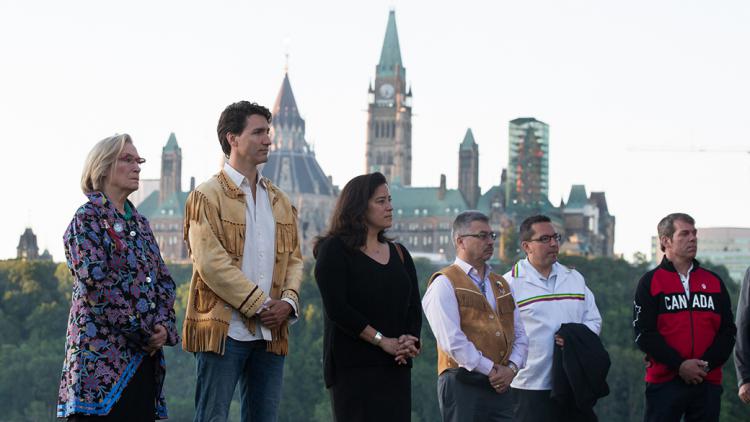
Article 26 states that “1) Indigenous peoples have the right to the lands, territories and resources which they have traditionally owned, occupied or otherwise used or acquired. 2) Indigenous peoples have the right to own, use, develop and control the lands, territories and resources that they possess by reason of traditional ownership or other traditional occupation or use, as well as those which they have otherwise acquired. 3) States shall give legal recognition and protection to these lands, territories and resources. Such recognition shall be conducted with due respect to the customs, traditions and land tenure systems of the indigenous peoples concerned.”
Article 32 states that “1) Indigenous peoples have the right to determine and develop priorities and strategies for the development or use of their lands or territories and other resources. 2) States shall consult and cooperate in good faith with the indigenous peoples concerned through their own representative institutions in order to obtain their free and informed consent prior to the approval of any project affecting their lands or territories and other resources, particularly in connection with the development, utilization or exploitation of mineral, water or other resources. 3) States shall provide effective mechanisms for just and fair redress for any such activities, and appropriate measures shall be taken to mitigate adverse environmental, economic, social, cultural or spiritual impact.”
UNDRIP has its problems of course, the most glaring of which is that it can never be implemented under capitalism. However, it is interesting to note that more than 140 states voted in favour of the document, with four voting against: Australia, New Zealand, the United States, and Canada. Given the colonial histories of these countries, the opposition of these states to UNDRIP really should not have come as a surprise to anyone. Officially, these four countries would eventually “endorse“ or “support” UNDRIP, with each of them finding unique ways to completely ignore it in reality.
The Harper government at the time, reflecting the interests of Canada’s ruling class, openly stated that their opposition to the declaration was based on concerns about the requirement for free, prior and informed consent. The Harper government argued that it could lead to the reopening of previously settled land claims and that it could also be seen as granting Indigenous people the power to “veto” major resource extraction projects—an idea the capitalist class simply cannot stomach because it threatens their class rule over the nation.
The Liberals under Justin Trudeau adopted a different approach from the Harper Conservatives, at least superficially in words. Trudeau has talked a lot about “reconciliation” and “nation-to-nation relations”, but has in effect continued the same colonialist approach and policies the Canadian state has always taken.
In May 2016 the Trudeau Liberals formally dropped the Canadian government’s objector status to UNDRIP. Indigenous Affairs Minister Carolyn Bennett announced at the time that “We are now a full supporter of the declaration, without qualification. We intend nothing less than to adopt and implement the declaration in accordance with the Canadian Constitution.”
However, less than two months later, then-justice minister Jody Wilson-Raybould stated in a speech to the Assembly of First Nations general assembly that UNDRIP could not be adopted as law because it contradicted the Indian Act. She said the following: “So as much as I would tomorrow like to cast into the fire of history the Indian Act so that the Nations can be reborn in its ashes, this is not a practical option … which is why simplistic approaches, such as adopting the UNDRIP as being Canadian law, are unworkable and, respectfully, a political distraction to undertaking the hard work required to actually implement it.”
The bourgeois state and resource extraction
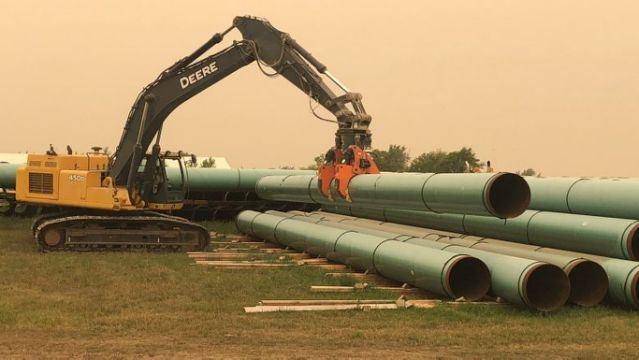
Prior to coming to power, Trudeau seemed to indicate that his government would accept the UNDRIP requirements of free, prior, and informed consent from Indigenous peoples before certain projects would be approved. At one time he even said that a “no” from an Indigenous community with regard to a pipeline project would result in the cancellation of the project.
That has all changed. The Canadian ruling class would not stand for such a position by the federal government. The oil corporations have been economically squeezed and are panicked by the rise of the United States as the world’s largest producer of oil and natural gas. The dominance of the U.S. has made it more difficult for the Canadian oil corporations to get oil and gas products to international markets. With limited access to infrastructure in the United States and the imposition of discounted prices, the oil barons in Canada are desperate to develop their own infrastructure in the form of pipelines and processing facilities.
The actual adoption and implementation of UNDRIP by the federal government could potentially threaten the ability of the ruling class to determine and control resource extraction and pipeline construction, which is why the ruling class is totally opposed to UNDRIP and the federal government has backtracked on it.
The oil corporations and the right wing, particularly in Alberta, have launched a noisy campaign in favour of pipeline construction at all costs. According to them, any opposition to pipeline construction, whether it be from environmental groups, Indigenous peoples, or even other provincial governments (B.C. and Quebec for example), must be mercilessly crushed.
From promising to guarantee the free, prior and informed consent of Indigenous people for projects affecting their lands, reflecting this pressure from the ruling class, the Trudeau government now says in relation to UNDRIP that it will only “aim at securing [Indigenous peoples’] free, prior, and informed consent” and can no longer guarantee it.
Trudeau later clarified this statement and said that Ottawa does not recognize the unconditional right of First Nations to unilaterally block projects, adding that “No, they don’t have a veto.”
By characterizing the free, prior and informed consent of Indigenous peoples with regard to resource extraction as a “veto”, the ruling class and its political representatives are effectively telling Indigenous peoples that whatever lip service is paid to UNDRIP, Indigenous peoples will still have no say in the economic activity that takes place on their lands. The federal and provincial governments and the corporations will have the final say. At best Indigenous peoples may be “consulted”, but the reality of the situation clearly shows that this “consultation” is completely meaningless, if it takes place at all.
From the point of view of the bourgeoisie, the capitalist class and their state must have control over resource extraction and must be able to protect profits. Economic mastery over the nation and the control of economic resources is after all one of the main tasks of the bourgeois democratic revolution and one of the key pillars in the class rule of the bourgeoisie. They will not give these powers up without a fight.

The provincial and federal governments are, in the final analysis, the executive committee for the ruling class, the capitalist class. The Canadian state therefore represents the aims and interests of the ruling class and has no real interest in the question of Indigenous rights or Aboriginal title. Prime Minister Trudeau in Ottawa or Premier John Horgan in B.C. may talk and talk about Indigenous rights and adopting the principles of UNDRIP, but when it comes down to the question of the interests and profits of the ruling class, for example in the form of a pipeline, the Canadian state will side with the capitalists and the corporations every single time.
Because of the support for UNDRIP, there are calls for the Canadian government to finally implement the declaration as a solution to the question of Indigenous rights. However, some of the problems with UNDRIP have already been graphically revealed. The Canadian government has already promised to implement UNDRIP, but is changing the wording to take away guarantees of free, prior, and informed consent for Indigenous peoples.
One way or another, the ruling class and the Canadian state will never allow the question of Indigenous right and title to threaten resource extraction projects or any other projects of major economic importance. Bourgeois law will always be used to protect the interests of the capitalists and will always be used against the rights of Indigenous peoples.
Thus, even if UNDRIP is adopted in some form as law, the reality is that Canadian governments will never be able to commit to guaranteeing free, prior and informed consent and can never grant Indigenous peoples control over resource extraction on their own territories because the means of production remain under the private ownership of the capitalists.
You cannot plan what you do not control, and you cannot control what you do not own. As long as the ownership of the means of production remains private and in the hands of the capitalist class, production and energy extraction will continue at the expense of society, Indigenous rights, and the environment for the profit of the few. Therefore, only a socialist government that eradicates private ownership of the land and the profit motive will be able to guarantee free, prior and informed consent. In fact, this will be our starting, and not our end point. The aim will be to work in complete partnership with Indigenous communities to provide jobs and livable communities on their traditional lands.
Unceded land
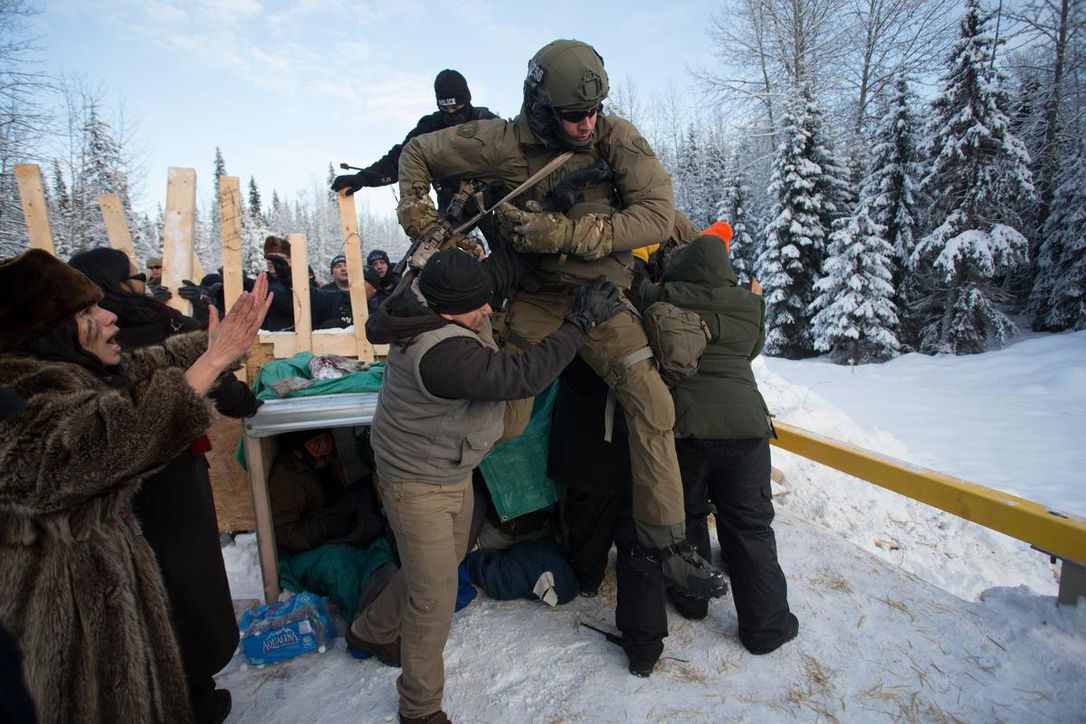
In July 2017 the B.C. government announced that it would introduce legislation to implement UNDRIP. Over two years later, it did so, though Premier John Horgan was also sure to emphasize that the legislation would not give First Nations a right to “veto” resource projects. It is expected that it will take even longer for the impact of the legislation to be felt.
In the meantime, the RCMP invaded traditional Wet’suwet’en territory in British Columbia, enforcing an injunction on behalf of the TransCanada oil and gas corporation to remove checkpoints blocking access to Coastal GasLink pipeline construction.
The attack on the Wet’suwet’en showed what the ruling class and the state consider to be “free, prior and informed consent”. The proposed Coastal GasLink pipeline will run through traditional and unceded Wet’suwet’en territory. There is significant opposition to this plan on the part of the Wet’suwet’en and their traditional leadership. The hereditary chiefs of the Wet’suwet’en are opposed to pipeline construction through their traditional territory and have banned it.
Despite this, the oil corporations, the state, and the right wing argued that they did in fact have the “consent” of Indigenous peoples to build the pipeline. In the face of the opposition of the Wet’suwet’en hereditary chiefs, the corporations and the government argued that agreements had been signed with all of the elected Indigenous bands along the pipeline route in British Columbia. They considered these agreements to represent the “consent” of Indigenous peoples to the construction of the pipeline.
However, these agreements with the band councils really have nothing to do with the situation and in fact mean very little because the band councils do not have jurisdiction outside the reserve areas. The band councils are colonial institutions imposed by the Indian Act and only have jurisdiction over reserve lands, which are very small, defined areas that are run similar to municipalities.
Here we face another source of confusion. Who are the genuine representatives of Indigenous peoples—“hereditary” chiefs or “elected” band councils? There can be an impression that it is a choice between a supposedly hereditary monarchy and democratic elections. But this is not the reality on the ground. The Canadian state forcibly broke up the traditional forms of government, the potlatch, the long houses, the clan mothers, etc., and imposed “elected” band councils as adjuncts to the Indian agents. These traditional forms of governance were often far closer to the people and reflected their wishes from the bottom up better than the alien system of band councils imposed from the top down. There is often a class divide where a minority of wealthy members of a First Nation have a monopoly of power in the band council, while the majority of working class members live in poor conditions. These Indigenous bourgeois often go on to become Liberal and Conservative politicians, and are the layer which the oil and mining corporations rely upon. There has even been talk about “Indigenous-owned” pipelines, as if this would be a solution when the majority of working class people on reserves face all the risks and none of the benefits.
It is better to conceptualize these forms of governance as traditional versus band council rather than hereditary versus elected; however, we have used the common terminology so as not to generate confusion. That being said, this observation is not a “one-size-fits-all” rule. The bottom line is that it is up to Indigenous people to determine how they govern themselves. In some instances the traditional forms of governance have been totally eradicated and no longer exist. In other instances elected band councils have reflected the desire to struggle from the bottom up. We have to look at each nation in its particularity, while understanding that there is also a class divide within Indigenous communities. This approach allows us to understand disputes such as that involving the Wet’suwet’en, and to cut through the propaganda of the corporations and state.
The Wet’suwet’en hereditary chiefs have argued that the agreements signed by the band councils have no validity on unceded traditional territories outside the reserves. Indeed, the Coastal GasLink pipeline is not passing through the reserves where the band councils have jurisdiction, but is in fact passing through traditional territory. The hereditary chiefs claim title to this land, traditionally have jurisdiction there, and have not granted consent to the building of the pipeline.
The question of unceded territory pertains primarily in British Columbia, where land was taken from Indigenous peoples without any treaties being signed. But this question also exists in other parts of the country such as New Brunswick.
The Indigenous peoples of New Brunswick did not surrender their land through treaties. Peace and Friendship Treaties were signed in 1760 and 1761 in the Maritimes; however, the Mi’kmaq and the Maliseet for example did not surrender rights or title to lands or resources in these treaties.
There is the example from 2013 involving the Elsipogtog First Nation in New Brunswick that is remarkably similar to the Wet’suwet’en situation. Following intense protests by members of the Elsipogtog First Nation against the fracking of shale gas on traditional, unceded territory, in 2016 the First Nation government filed a land claim on behalf of all Mi’kmaq people claiming title to around one-third of the province.
As explained previously in this document, the Royal Proclamation of 1763 formally recognized that all lands would be considered Indigenous lands until ceded by treaty. Over the centuries since the Proclamation of 1763, the government of British Columbia did not in fact negotiate many treaties, with the result being that much of the land in the province is not covered by treaty. This means that according to Canadian law, much of the traditional Indigenous territory in the province was in fact unceded, as it was never formally surrendered, sold, lost in a war, etc.
Indeed, the ruling class is deeply concerned about what the adoption of UNDRIP would mean for the province of British Columbia. After Premier Horgan announced that “B.C. will be the first province in Canada to introduce legislation to implement the United Nations Declaration on the Rights of Indigenous People”, the Vancouver Sun explained that “a third article [of UNDRIP] grants Indigenous peoples the right of redress ‘for the lands, territories and resources which they have traditionally owned or otherwise occupied or used, and which have been confiscated, taken, occupied, used or damaged without their free, prior and informed consent.’ Given the absence of treaties over most of B.C., the lands, territories and resources that have been confiscated, taken, occupied, used or damaged without free, prior and informed consent would constitute pretty much the entire province.”
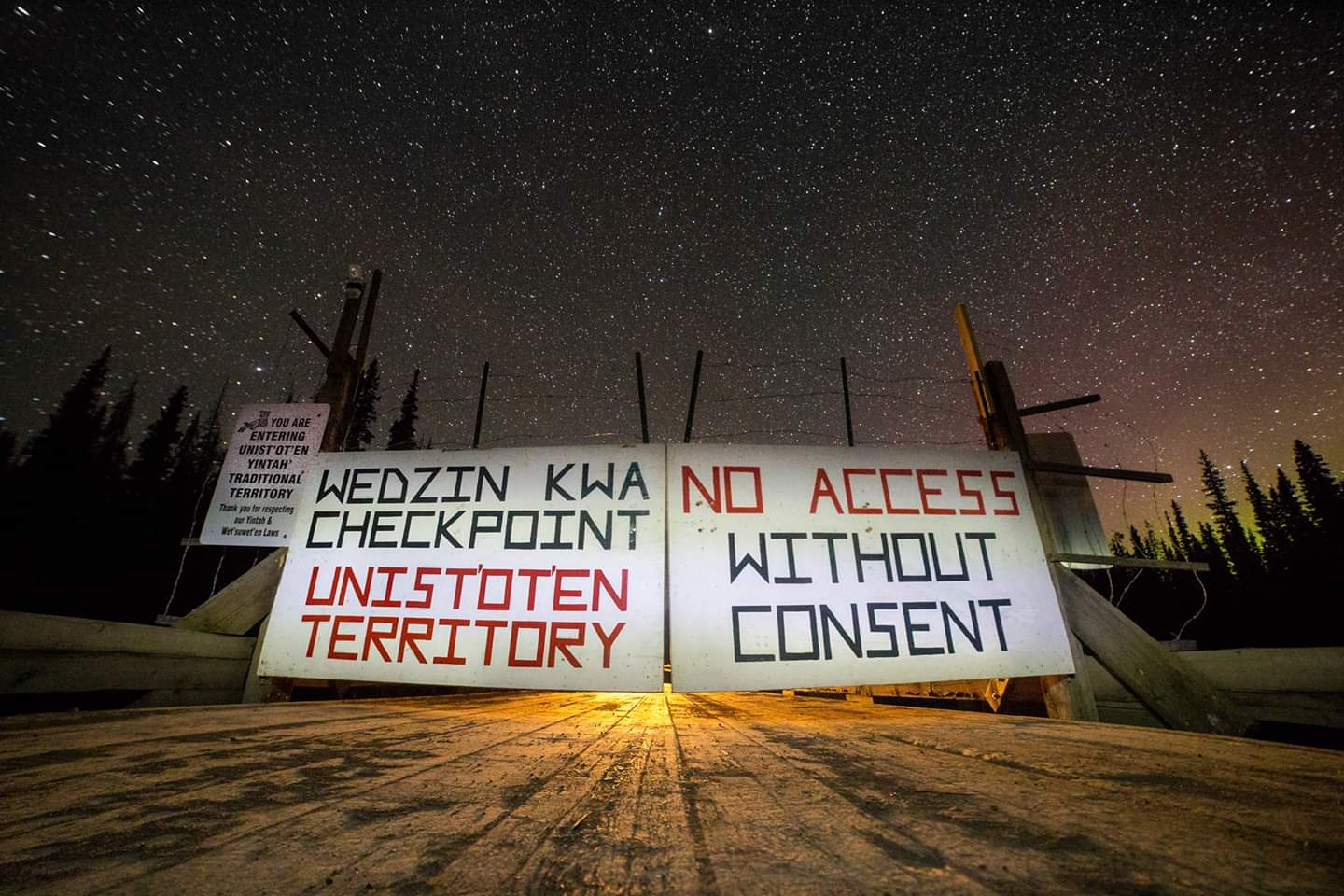
The lack of treaties in B.C. did eventually force the implementation of the British Columbia Treaty Process, which started in the early 1990s, to begin treaty negotiations and resolve claims of Aboriginal title.
The hereditary chiefs of the Gitxsan and Wet’suwet’en Nations went to court in the 1980s claiming unextinguished Aboriginal title over their traditional territory in the Delgamuukw v. British Columbia case. In 1997, the Supreme Court of Canada ruled that the Wet’suwet’en people had not given up the rights and title to a large swathe of their traditional territory, which was never ceded by treaty, and recognized that Aboriginal title continues to exist where Indigenous nations had never signed a treaty with the Crown.
The traditional territories of many Indigenous peoples in British Columbia are claimed by the Crown, but were never paid for, conquered, or acquired by treaty. However, while recognizing that the Wet’suwet’en had never ceded their land or extinguished their rights and title to their traditional territory, the Supreme Court in its Delgamuukw ruling did not fully define these rights or title, leaving that definition up to a future case.
Naturally, this subsequent case never happened. This is by design. The questions of Indigenous rights and Aboriginal title were ignored for centuries by the Canadian state. Canadian law was always used as a weapon to colonize and criminalize Indigenous people, such as through the residential school and reserve systems. Even when legal precedent eventually forced the state’s hand, provincial and federal governments either completely ignore legal precedent or simply tie things up in the courts endlessly.
The Wet’suwet’en have never had the financial resources to launch a claim and legally determine title to their lands due to the enormous costs of an Aboriginal title case. However, the oil corporations and provincial and federal governments are terrified at such a prospect, because a ruling recognizing Wet’suwet’en title over their traditional territory would put an end to multiple pipeline projects. This explains the urgency on the part of the oil corporations and the provincial and federal governments to get injunctions issued against the Wet’suwet’en checkpoints, and to get the pipelines constructed as quickly as possible before the legal ground can shift.
The federal and provincial governments of Canada are simply ignoring the legal framework of the Delgamuukw case. This is nothing new. Bourgeois law is intended to protect bourgeois interests and the private ownership of the means of production. Instead, governments and corporations are consulting and signing agreements with band councils that do not have jurisdiction over these lands, and then turn around and claim these agreements are “proof” of the “consent” of Indigenous communities to the construction of these pipelines.
Some have argued that if the Wet’suwet’en were to go back to court they would have a strong claim to title over their territories, which is true. However, history itself has clearly demonstrated that the courts and the law cannot be relied upon by Indigenous peoples. Bourgeois law is designed to protect the interests and profits of the capitalists. The conflict between the interests and profits of the ruling class and the rights of Indigenous people will never be resolved through bourgeois law. As one First Nation chief recently said, “You cannot dismantle the master’s house using the master’s tools.”
Land acknowledgments
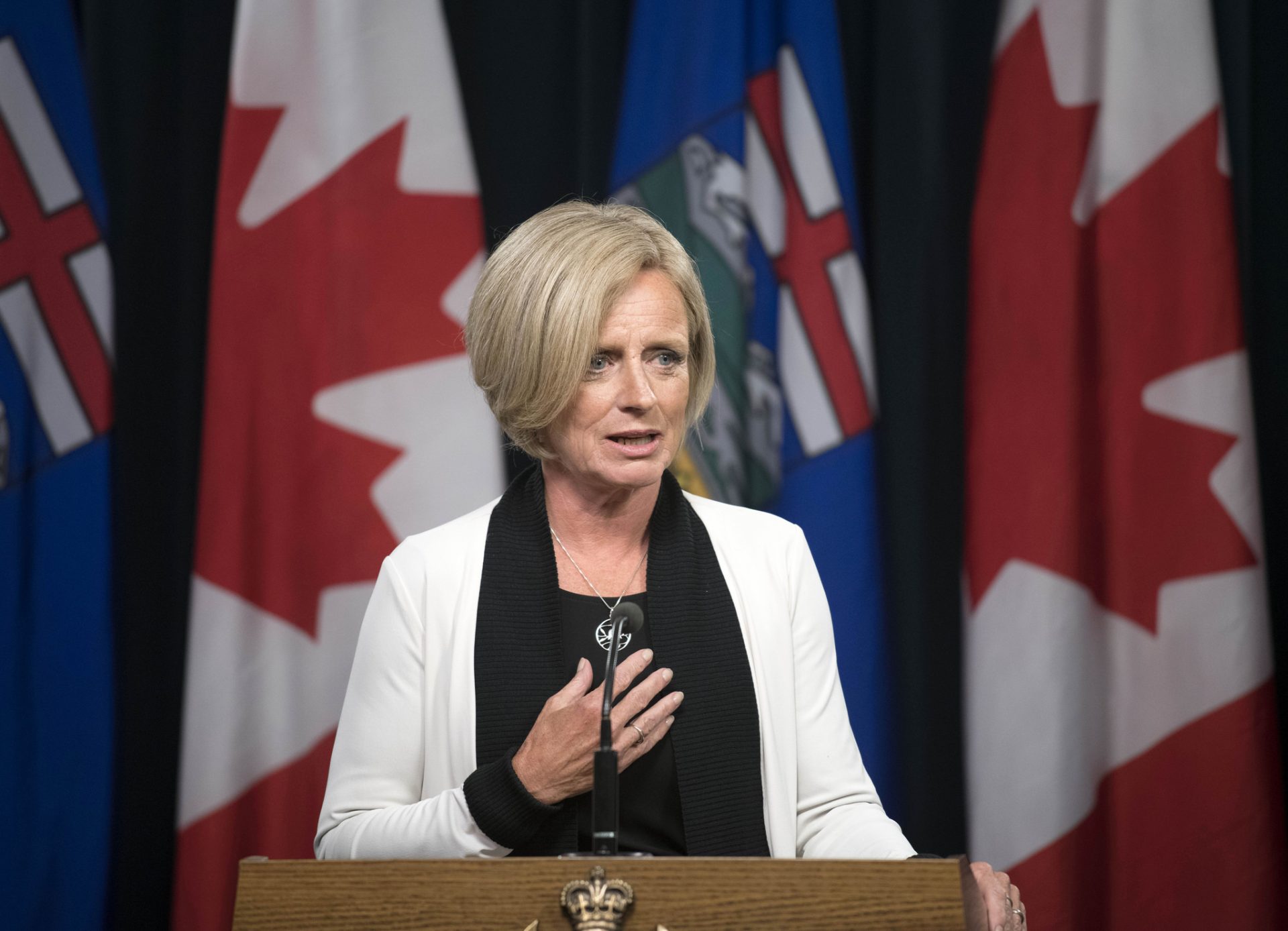
while advocating pipelines. (Gov. of Alberta)
The Truth and Reconciliation Commission also recommended the use of land acknowledgement statements, arguing that they could help promote reconciliation. From being a routine part of Indigenous ceremonies and meetings as well as progressive and left-wing events, land acknowledgements have become commonplace at the start of school days, conferences, ceremonies, and sporting and music events, such as Symphony Nova Scotia performances and at Edmonton Oilers and Winnipeg Jets games in the NHL.
Under Prime Minister Justin Trudeau, land acknowledgments have been standard at the start of federal announcements and events. This was also the case in Alberta under the Notley NDP government (since reversed under Kenney’s UCP government).
There are the beginnings of a debate in Indigenous communities over the value of land acknowledgements. Many believe that land acknowledgements do have value and that they help promote awareness and thus reconciliation. Others are of the opinion that land acknowledgements are meaningless, empty platitudes, not to mention patronizing.
While land acknowledgements as they are today do not really do anything to benefit Indigenous peoples or further their struggles, to many it is important that people are aware of the history of colonization, oppression and genocide. On the other hand, others have argued that rather than focusing on empty rhetoric, we should be focused on issues such as addressing the terrible conditions on reserves.
Land acknowledgments can also have unintended reactionary consequences. In some cases, such as in the Toronto area, the land purchased by the Crown was contested between different Indigenous peoples. The question of land acknowledgments in these areas can open old arguments between Indigenous peoples about who was present on the land at that time or whose land it was. These types of arguments can only have reactionary consequences, as it cuts across precisely the unity and solidarity needed to advance the struggle.
Like almost everything else, we must view the question of land acknowledgments through the lens of the class struggle. Through this lens it becomes very clear that as a statement of the oppressed against the bourgeois Canadian state and its history of colonial genocide, land acknowledgments are progressive.
However, when used as a purely performative act by this or that wing of that very same bourgeois state or by one of the main capitalist parties, land acknowledgments are reactionary and really only serve as a smokescreen and amount to little more than an attempt to absolve the Canadian state and ruling class of responsibility for historic crimes against Indigenous people. A similar argument could be used in the case of unions, NGOs, “left” groups and academics who use land acknowledgments in the place of militant action or any real solution to the problems facing Indigenous people.
The use of land acknowledgments by the federal government, the very body that presides over the Indian Act; or by B.C. premier John Horgan, who presides over the sending of the RCMP to invade Wet’suwet’en lands to protect corporate interests; or by former Alberta premier Rachel Notley, whose unrelenting push for pipelines would surely have brought her into conflict with Indigenous peoples, are really only examples of institutional hypocrisy.
Socialism and reconciliation
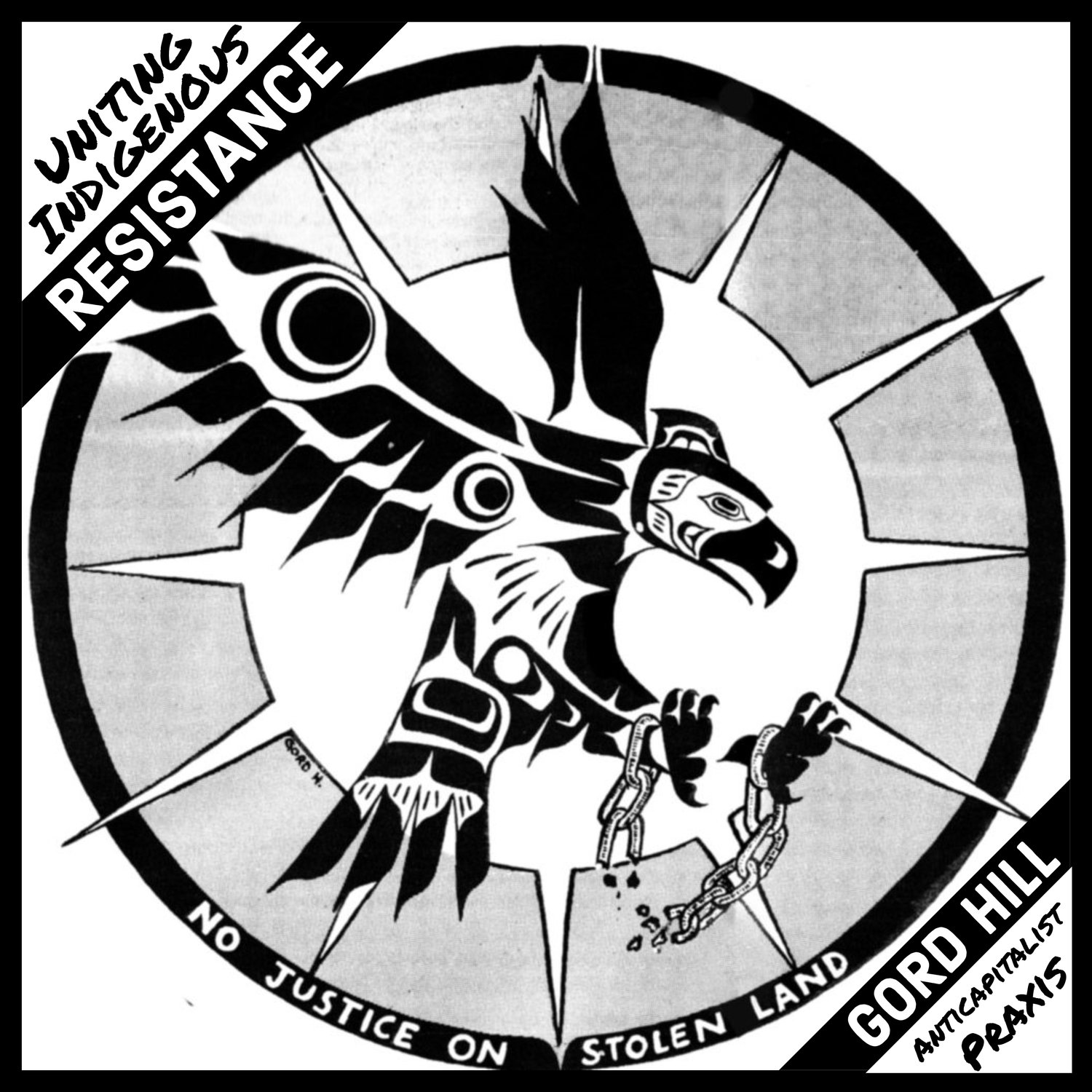
The whole concept of “reconciliation” under capitalism is a sham. Why should oppressed and subjugated peoples have to seek reconciliation with their oppressors in the first place? The whole idea is nonsense. Besides, how can one seriously talk of reconciliation when Indigenous peoples are still fighting for basic human rights, for recognition of title, for the right to free, prior and informed consent, etc.
There can never be reconciliation under capitalism. The very foundation of Canada is rooted in the oppression, subjugation, and exploitation of Indigenous people. The ruling class and the Canadian state cannot allow the question of Indigenous rights and title to interfere with resource extraction and profits. In fact, the ruling class considers the prospect of Indigenous rights and title interfering with resource extraction to be a threat to national security.
A workers’ government, on the other hand, would not adopt the hypocritical mantra of “reconciliation”, nor would it expect it from Indigenous peoples. Rather, a socialist revolution would be interested in the genuine liberation of Indigenous peoples from centuries of colonial oppression and exploitation.
A government of working people would not be interested in imposing any sort of solution to the question of Indigenous liberation on Indigenous peoples, but rather would stand together shoulder to shoulder in solidarity with Indigenous peoples in their struggle for liberation, providing any and all assistance to achieve this end.
The liberation of Indigenous peoples is a task that must be carried out by Indigenous peoples themselves. Indigenous people must be able to control their own fate democratically. More than simply guaranteeing “free, prior and informed consent”, socialism means that Indigenous peoples would not be merely “consulted”, but actively involved in the democratic decision-making and would be guaranteed land and resource rights.
A socialist government would scrap the Indian Act as a first step towards ending the colonial subjugation of Indigenous peoples and would immediately recognize Indigenous autonomy and self-government where declared. A massive program of social funding would be launched to provide education, health care and housing for all Indigenous peoples. All resources would be made available to end the scandal of unsafe drinking water.
A socialist government would commit to resolving all land title claims immediately and to providing compensation for any and all lands occupied, stolen or confiscated by the bourgeoisie and their state.
Socialism and resource extraction
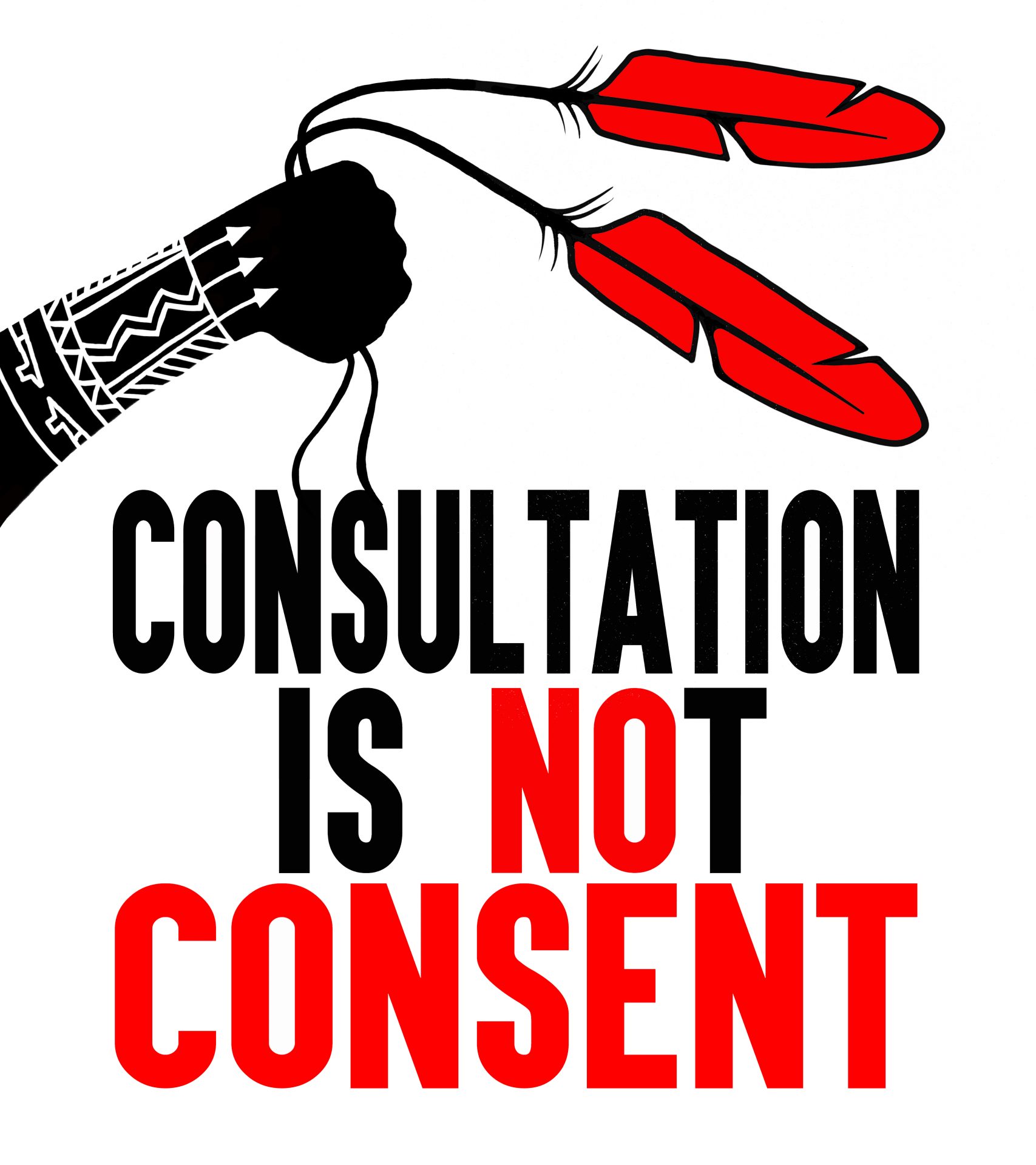
To achieve sustainable, harmonious production means we need to democratically plan our society. We need to plan how and where we produce, what we produce, and whom we produce for. Such rational planning can obviously not be achieved under capitalism. It cannot be achieved so long as the ownership of the means of production remains in the hands of the capitalist class—so long as production is for profit, and not for need and according to a rational plan.
In order to plan the productive forces in a harmonious manner, the ownership of the means of production must be taken by the working class via a workers’ state.
The solution to these problems is clear. It is only through nationalizing the means of production and instituting a scientific, democratic, and rational plan that we will overcome the miseries of capitalism: exploitation, inequality, and poverty. It is only through the building of a socialist society that we will be able bring our productive technique into harmony with both the needs of society and the environment and take humanity forward.
Trotsky explained that a nationalized planned economy requires democracy as the human body requires oxygen. Under socialism, under a regime of genuine and thorough workers’ democracy, all communities, Indigenous and non-Indigenous, would not just be “consulted” about economic activity in their areas and regions. Nor would these communities be guaranteed the simple right to “free, prior and informed consent”. Rather, socialism and workers’ democracy inherently implies that communities would have a direct, democratic say in the planning and implementation of activity in their regions.
Only with the socialist transformation of society will Indigenous peoples finally be empowered to genuinely, democratically determine their own fate and to have direct control over economic activity on their territory, including resource extraction, etc. Without the profit motive, local Indigenous communities can be genuinely and intimately involved in all development on their territories. Under the democratic control of the working class and communities, the wealth generated by such development can directly benefit the people—who must also play a direct role in planning and implementing such development to ensure concerns about environmental and community safety are adequately addressed, and to provide training and jobs for local residents.
Socialism and self-determination
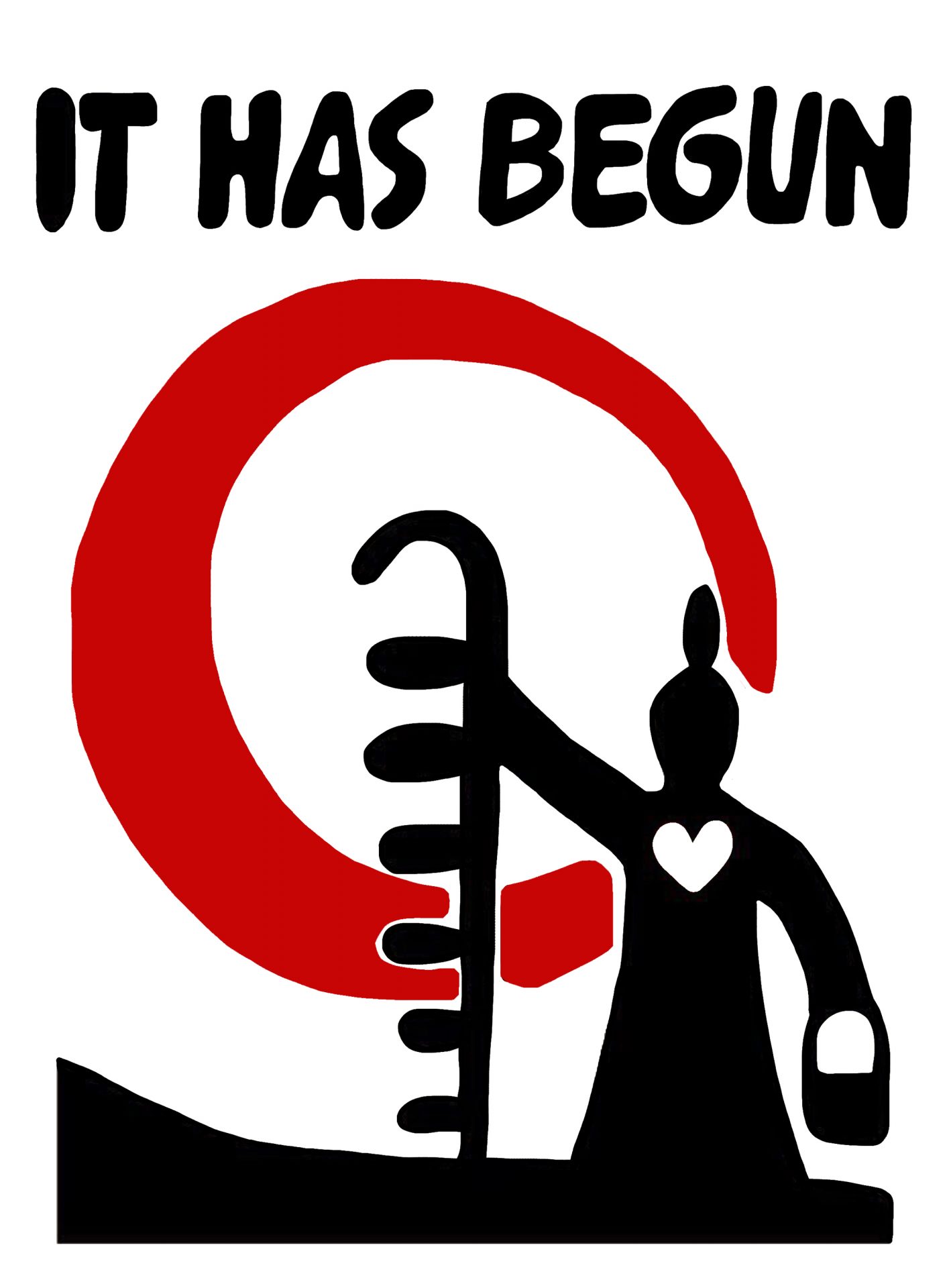
A common demand among Indigenous communities and their supporters is for Indigenous self-determination. This has created some confusion amongst Marxist circles, as there are different understandings of the term. Self-determination in Marxist literature is closely associated with the national question. There are parallels between the Marxist analysis of oppressed nationalities and the struggle for Indigenous liberation, just as there are similarities between this question and the fight against racism, but they are not exactly the same thing. It is important to clarify both the traditional Marxist usage and the current popular usage of the term self-determination in order not to end up making contradictory or reactionary statements.
Lenin wrote widely on the right of oppressed nations to self-determination, up to and including separation. The tsarist empire was a prison-house of nations. The Great Russians, who were a minority in the empire, controlled and oppressed the Poles, Ukrainians, Georgians, Finns, Jews, Latvians, Estonians, and others. A large part of the populations of these nations had been brought into political consciousness in the context of a hatred of the national oppression perpetuated by Russian tsarism. These nations typically spoke a common language, in a region with recognized borders, with a community of history and culture and a cohesive economy. Nationalist political factions within these nations often advanced the formation of an independent nation state as a solution to national oppression.
The Russian Marxists wanted to make it clear to the oppressed nationalities that the working class had no interest in continuing tsarist oppression; that they would fight to eradicate all the laws, regulations, and other injustices perpetrated under the banner of the empire. This meant defending and upholding the right of an oppressed nationality to the utmost autonomy in governing its own affairs, including the democratic right to form a new nation state. However, that did not mean that the Bolsheviks wanted the nations to separate. In fact they wanted the exact opposite. They wanted a fighting unity of the Russian workers with all of the oppressed against their common oppressor, the tsarist regime. By ensuring the right to self-determination and separation, Lenin hoped to cut across any mutual suspicion and win a voluntary union of the oppressed. And if a nationality still wished to form an independent nation state, then so be it; they had that democratic right.
Self-determination of Indigenous nations has a different connotation to the above. For example, there is the Dene Declaration that was passed at the Second Joint General Assembly of the Indian Brotherhood of the Northwest Territories in 1975. It states the following: “Our plea to the world is to help us in our struggle to find a place in the world community where we can exercise our right to self-determination as a distinct people and as a nation.” This can seem analogous to the demands for independence of the nationalities in the tsarist empire, or to Scotland, Quebec, and Catalonia today. But when one reads the entire declaration there is a very different intention.

( Fumoleau/NWT Archives)
Demands in the Dene Declaration include the following: to control and decide on development in their lands and who benefits from such development; to maintain a sharing and egalitarian society and economy; their own system of government; environmental planning to protect hunting and fishing rights; royalties from mining and other development that exists or is permitted; control of education when in a majority, and involvement when not. All of the above are entirely progressive and supported wholeheartedly by Marxists.
Other First Nations have advanced similar demands. In Marxist terminology, they would be encompassed in the demand for increased autonomy. In fact, much of the above could be implemented in a socialist society as part of local community control, regardless of whether the population is Indigenous or not. No community should face the environmental risk of development without negotiations to ensure the risk is acceptable, while ensuring that those bearing the risk have all the information and get a commensurate reward. Schooling should encompass all the languages and cultures of a local community. In a workers’ democracy people will freely determine the exact details.
While calling for self-determination, sovereignty, and recognition as a nation, the Dene Declaration explicitly does not call for the formation of a nation state. They say, “Our goal is maximum independence and self-determination of the Dene Nation within the Country of Canada through a just and equitable land settlement.” They also guarantee the rights of non-native inhabitants on Dene land. This call for autonomy is combined with an appeal to the Canadian working class, who are oppressed by the same corporations and governments who oppress the Dene,
The great majority of people in Canada are like ourselves in being relatively powerless in the face of big companies and by governments. In the face of our assertion of our rights, the choice that others must make is between ourselves, on the [one] hand, and the outside developers that are increasingly accountable to no one, on the other hand. By joining us in our struggle people can begin as well to liberate themselves.
This is a fantastic call for class solidarity and entirely the correct approach to achieve liberation and an end to oppression.
As far as we can ascertain, no First Nation in Canada has ever called for the formation of a new nation state. Some ultra-left students in Toronto or Vancouver, having read a very small amount of Lenin and not understood it, have advanced the demand for independence of First Nations without thinking this demand through. To start with, to enforce independence on a people who are not calling for it themselves is not much better than enforcing unity on a people who are demanding independence.
Secondly, independence for whom? Is this supposed to be one large Indigenous nation? But there are more than 600 recognized First Nations in Canada, each with a unique culture and history. It is frankly racist to say that all Indigenous people are the same. One may as well say that as Europeans, all French, Germans, and British are the same, or that all Africans are the same! Or do these people envision a new nation state for every First Nation? Almost all First Nations have interlocking land claims. How would this be resolved with more than 600 new nation states?
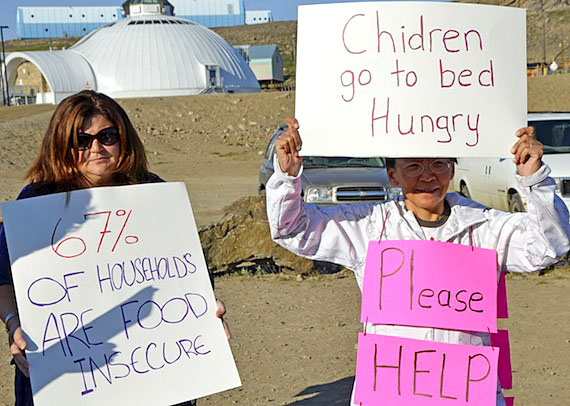
(Nanatsiaq News)
The Indigenous First Nations within Canada are not the same as the nation states in old Europe, and they do not pretend to be. The only area that could perhaps be analogous would be the Inuit in Nunavut, but even this is a theoretical abstraction and currently nobody is calling for the independence of the territory. For the national question, and the struggle for Indigenous liberation, it is necessary to take every struggle in its concrete reality and not impose an artificial schema on developments. Scotland is not the same as Quebec, just as the Indigenous struggle is not the same as racism against Black people in the USA. Each has to be taken in its own particularity. Marxists support the just demands of the oppressed First Nations for increased control over their traditional lands, their education, their culture, and their economic development, and we do not force these communities to adopt slogans that do not correlate with their own struggles or wishes.
At the same time, we should underline the limitations of autonomy for Indigenous peoples under capitalism, of which Nunavut is a good example. The creation of the territory of Nunavut in 1999 was the result of negotiations between the Inuit and the Canadian government since the 1970s. There were significant political gains for the Inuit, who make up 85 per cent of the territory’s population, as the agreement allowed them to have greater control over their lands, education, culture and languages. However, the territory remains highly dependent on financial transfers from the federal government, in addition to being at the mercy of large multinational companies—particularly mining companies, who establish themselves in order to exploit the natural resources and cheap labour and then leave. Twenty years since the creation of Nunavut, the Inuit continue to face significant economic challenges such as the exorbitant price of commodities, the highest unemployment rate among the provinces and territories, and a glaring lack of essential care and services. Poor material conditions, food insecurity and a significant shortage of housing resulting in overcrowding lead to serious health problems. The infant mortality rate in Nunavut is three times higher than the national average, and the territory is affected by an epidemic of tuberculosis, the gravity of which rivals some Third World countries. A lack of resources in the education system also limits the ability to protect the Inuit languages, which have continued to decline since the creation of Nunavut. The terrible living conditions in Nunavut demonstrate the immense limitations imposed by capitalism on the emancipation of Indigenous peoples, whether or not they have autonomy on paper.
Postcolonial theory: A dead end
Following an era of revolution in the 1970s, the class struggle entered a period of decline, reaching its low ebb in the 1990s after the collapse of the Soviet Union. This had profoundly negative effects on left-wing intellectuals who abandoned Marxism. As is quite common in periods of reaction, there was a proliferation of all sorts of ideas reflecting the prevailing pessimism of the left.
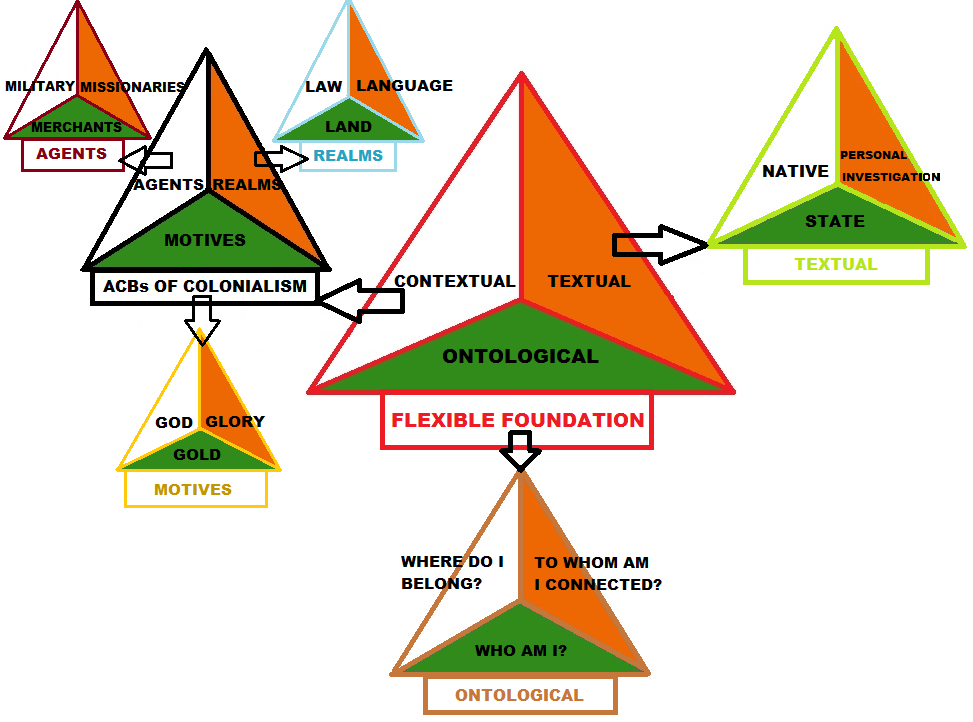
“A Flexible Foundation” (2002)
With regards to the Indigenous question, this has been reflected in the academic ideas of “postcolonialism”. We have explained how Canada was settled by white people from Europe with the goal of exterminating, replacing and assimilating the Indigenous population. The racist legacy from this horrible crime visited upon Indigenous peoples is alive and well today. The postcolonial theorists recognize these facts and state that the solution is to “decolonize”. At first glance it would appear that we should support the call to decolonize, which one would assume means to fight against colonialism. So far this is all ABC for a Marxist. As they say, however, the devil is in the details.
The logical conclusion of postcolonial theory is the idea that Indigenous peoples and non-Indigenous workers have conflicting or opposing interests. In a rabble.ca article titled “Building rage: Decolonizing class war”, the author suggests that “there are deeply rooted contradictions between aims and interests of a colonized working class and an urban non-Indigenous working class.” The author goes on to question whether demanding a higher minimum wage depends on continued or increased exploitation of some workers within the national borders of Canada, perhaps those who are forced to work on the black market.
In another article from the left journal Canadian Dimension entitled “A Twelve-Step Program for a Post-Colonial Future”, the author suggests that non-Indigenous Canadians are “privileged” precisely because of the oppression of Indigenous peoples, meaning that non-Indigenous workers directly benefit from the latter’s continued subjugation. The solution offered is that non-Indigenous people must undermine and surrender their own “privileges”.
The entire thrust of much of this literature is to shift the focus away from a class struggle against the capitalists (who own most of the land and resources and make all of the major decisions) and onto a struggle of Indigenous peoples against the “settlers” as a whole. In the article “Decolonization is not a metaphor”, authors Eve Tuck and K. Wayne Yang only mention capitalism in the footnotes, yet spend pages criticizing the Occupy movement:
In Occupy, the ‘99%’ is invoked as a deserving supermajority, in contrast to the unearned wealth of the ‘1%’. It renders Indigenous peoples (a 0.9% ‘super-minority’) completely invisible and absorbed, just an asterisk group to be subsumed into the legion of occupiers.
What is not even recognized here is that framing things in this manner completely “erases” any class differences and treats anyone who is not Indigenous as fundamentally the same.
This article even goes so far as to explain that: “The pursuit of worker rights (and rights to work) and minoritized people’s rights in a settler colonial context can appear to be anti-capitalist, but this pursuit is nonetheless largely pro-colonial.” From this premise, the authors naturally draw the absolutely reactionary conclusion that “For social justice movements, like Occupy, to truly aspire to decolonization non-metaphorically, they would impoverish, not enrich, the 99%+ settler population of the United States.”
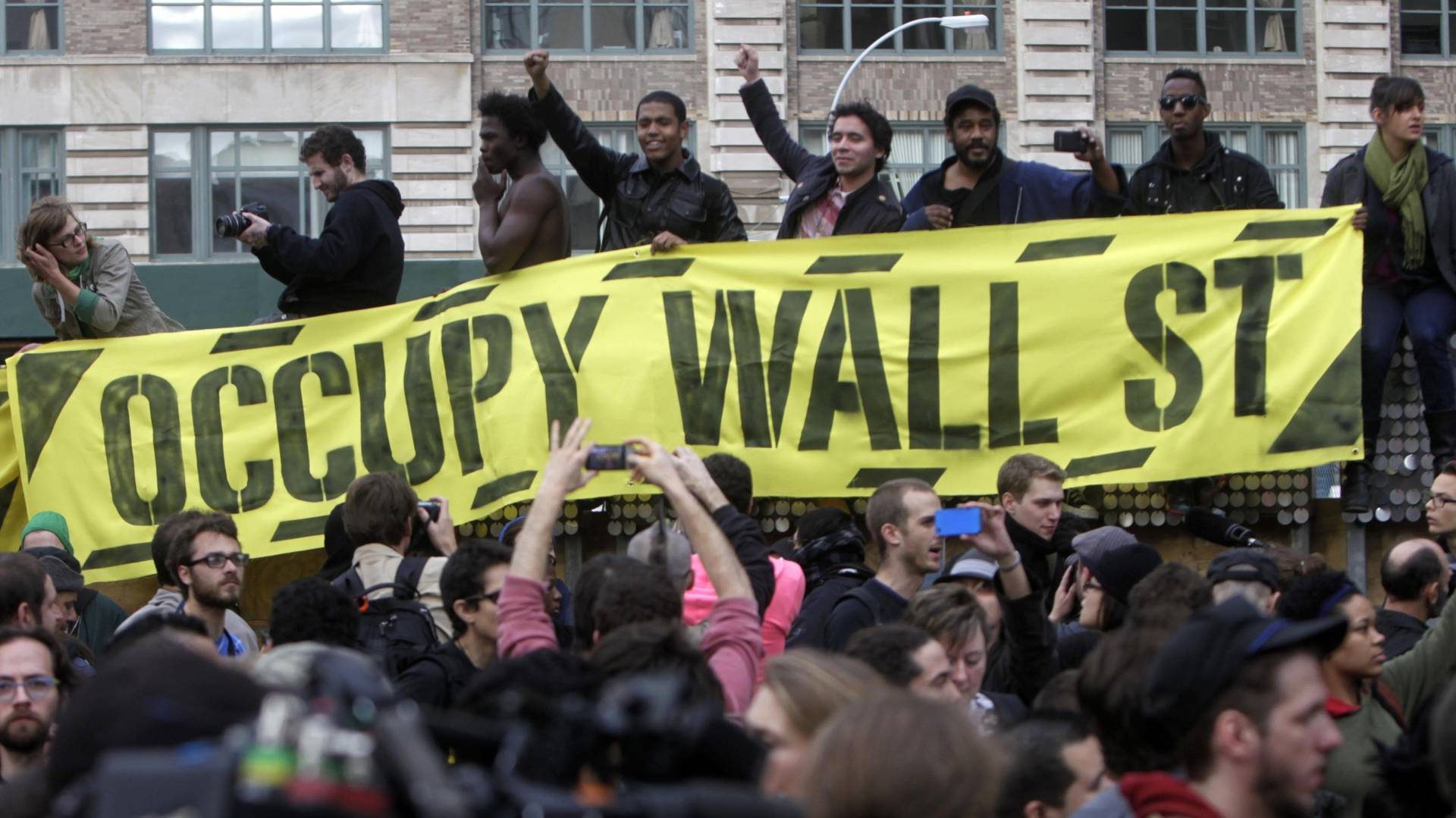
(DemocracyNow!)
This approach is flawed in more than one way, not the least of which is that this purely identity-based approach falls directly into the hands of the capitalists who pit different sectors of the workers against each other to thwart any united mass movement. This is a very dangerous idea for the movement, as it makes solidarity impossible. The slogan “support Indigenous people and impoverish yourself” clearly will only damage the movement.
Supporters of postcolonialism sometimes call for the overthrow of the “settler-colonial” state. If they meant a united class struggle to overthrow the Canadian bourgeois state then we would be in full agreement. But that is not what is meant. The entire non-Indigenous working class, including recent immigrants and refugees struggling against racism, are labelled as “settlers”. The Canadian state is deemed the property of all “settler-colonists” against the Indigenous. They say that the Canadian state—whose police regularly kill Black and immigrant youth, that breaks strikes with back-to-work legislation—is the property of workers and youth. This is an appalling position.
The Canadian state is the property of the Canadian capitalist class and no other class. In the 19th century and earlier it would have been fair to call it a colonial state, dependent on British imperialism and the British bourgeoisie. But as we explained above, at no time was it the state of the poor European settlers exploited by the Anglo-Canadian capitalists. In the 20th century the Canadian bourgeoisie cut the apron strings to the motherland and developed themselves as an independent ruling class. From that point on the Canadian state became an imperialist state, no different in its fundamentals than the British, French, or German states.
While both the far right as well as postcolonial theorists would have us believe that our interests are mutually opposed, the fact is that Indigenous and non-Indigenous workers have the same fundamental interests. We share a common enemy, the capitalist class, which oppresses and exploits all of us. It is a well-known fact that a tiny minority of capitalists own the vast majority of land and wealth in the world. The companies that attack unions and push austerity measures are the very same capitalists that drive mineral extraction projects on Indigenous lands.
It is obviously true that certain sectors of the population are more oppressed than others, and Indigenous peoples are one of the most oppressed layers in society. However, we fundamentally disagree with the idea that non-Indigenous workers benefit from the oppression of Indigenous peoples. What these academics label as “privileges” are in fact fundamental rights and opportunities that in most cases have been won in struggle, and we should aim to extend them to all. It is true that historically the ruling class has conferred benefits to one layer of the exploited to convince them, for a time, that the system works in their interest. But this is a total illusion that must be shattered. We cannot do what many postcolonial theorists do and accept the bourgeois illusions which they use to divide the working class to continue their rule.
Idealist method
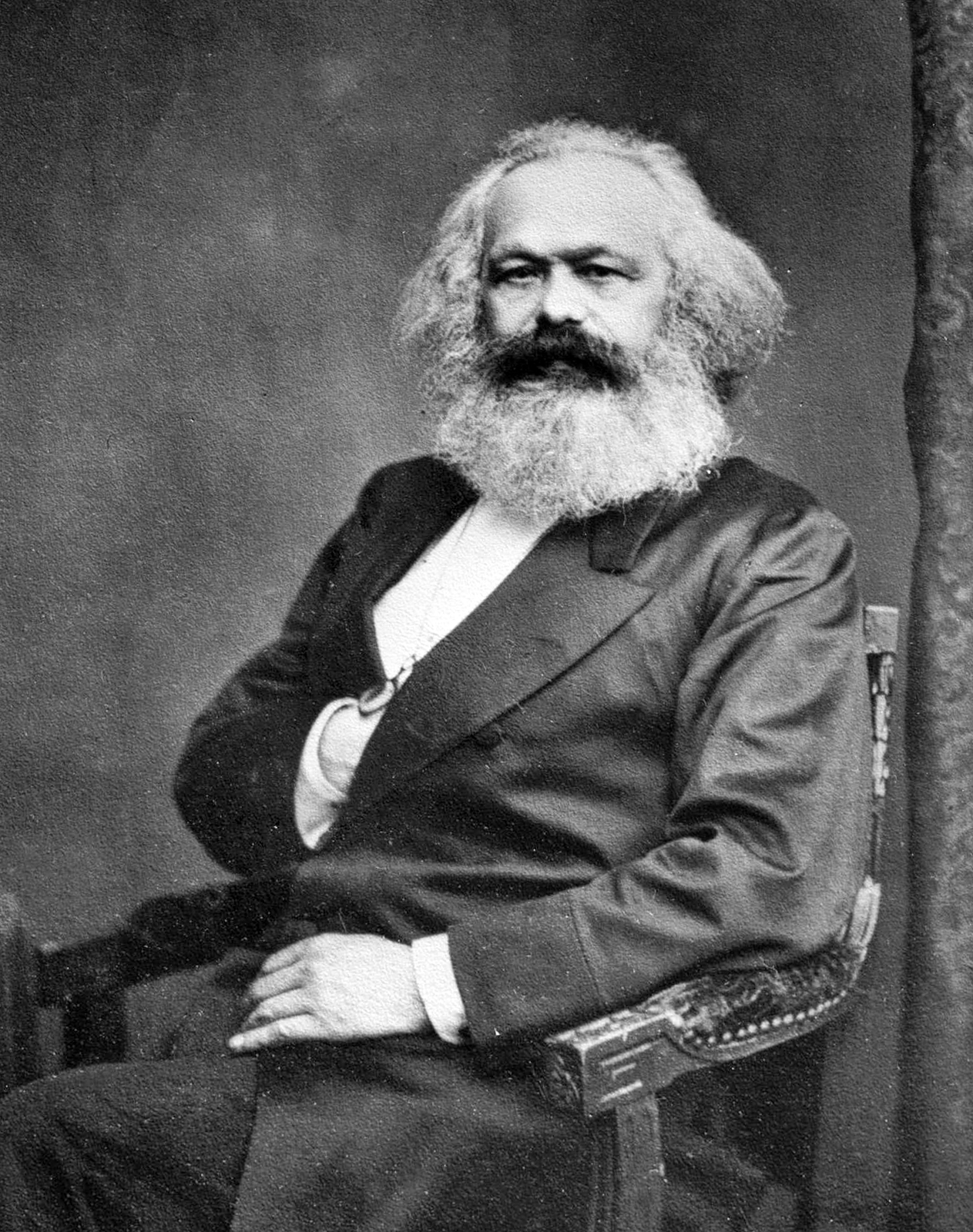
(Roger Viollet Collection/Getty Images)
Here we can see the fundamental divergence between dialectical materialism and Marxism on the one hand, and idealism and postcolonialism on the other. While postcolonialism appears to offer a way to fight imperialism and racism, in reality the postcolonialists come to the same conclusions as the imperialists and consequently offer no fundamental change.
From the perspective of the ruling class, the dominance of Western capitalism and imperialism is a reflection of the “more advanced” or “superior” culture of Europeans. According to this idea, European cultures were more advanced, and because of this they were able to develop capitalism (or at least more advanced methods of production) than the peoples they would come to dominate. According to the capitalists, because of this “superiority”, European civilization was destined to dominate the globe. From the perspective of the bourgeoisie, this is the historical justification for colonialism and imperialism.
The postcolonialists end up coming to the same conclusions as the ruling class, just from the other side. According to the postcolonialists, culture is the driving force of history and it is the racist culture in Western societies that causes Western imperialism. Therefore, Western culture is inherently and hopelessly racist, and it is this characteristic that drives Western countries into attempting to assert dominance over all other cultures.
According to this perspective, all people in Western societies are lumped in together as one reactionary, racist bloc—regardless of the class divide— and therefore there can be no unity between the oppressed colonial peoples and the oppressed classes in the dominant imperialist countries in a struggle against capitalism, imperialism, and racism. According to postcolonialism, this unity can never be achieved because everything and everyone originating in Western civilization is inherently racist and imperialist—including the working class and the revolutionary ideas of Marxism.
However, as materialists we understand that imperialism is not the result of the individual will of the capitalists, or a result of culture. Rather, the opposite is the case. Culture, politics, law and society flow from economic factors.
Marx explained in The Communist Manifesto how capital, once having saturated the home market, is forced to go beyond its borders due to its own inherent contradictions and spread all over the world. That is the fundamental basis of colonialism and imperialism under capitalism.
Racism is the political side of this process. On the one hand, the bourgeoisie justifies their imperialism with racism. But in using nationalist and racist ideas, they also divide the working class along national lines in an attempt to rally a layer of the working class behind them and prevent unified class struggle against the exploitation and oppression of capitalism and imperialism.
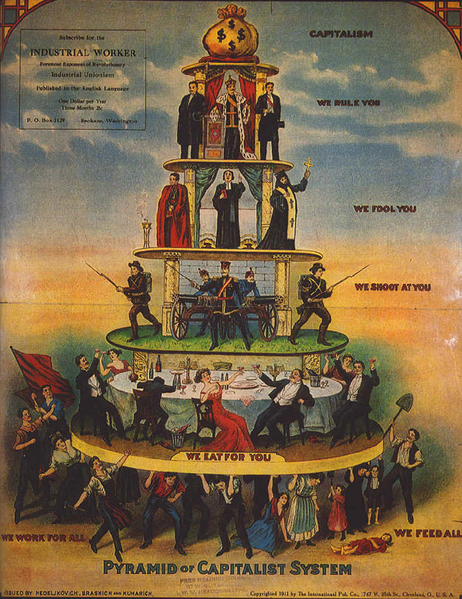
The postcolonialists basically say the same thing as the imperialists and thereby rule out any united international struggle against imperialism. They boil down the struggle against racism and imperialism to the defence of (historic) culture and religion—or rather, the defence of non-Western cultures and religions against the cultural onslaught of the West. In other words, postcolonialism sees the history of the world not as a history of the development of the productive forces or a struggle of fundamental economic interests, i.e. the class struggle. They see it as a clash of cultures, a clash of civilizations, which is exactly how the ruling class views it. In reality these are the prejudices of the petty-bourgeois nationalists of the oppressed nations, and have nothing whatsoever to do with the outlook of the working class, which is instinctively internationalist.
The idea that culture is the driving force of history is completely rooted in an idealist method. Idealism is based on the concept that our ideas are the primary element in the world and that material reality is a reflection of our ideas. This is how the postcolonialists come to see culture as the driving force of history, i.e. racist culture engenders imperialism.
But as Marxists, we believe that there is only one material reality and that our ideas are a reflection of this material world, and a reflection of our material conditions.
However, we are not crude economic determinists or fatalists. History does not unfold in a schematic way due to economic factors alone. There is not an automatic and immediate relationship between developments in the economic base of society and the social superstructure of society. Marx and Engels explained this repeatedly.
Culture, art, philosophy, politics, and traditions play a huge role in society, and in turn can impact economic development. But in the final analysis, culture and ideas are determined by material reality, by the class struggle and the development of the productive forces in society. Thus, from the perspective of Marxism, racist culture is the product of the economic forces that drive imperialism and is used to justify colonial domination.
The postcolonialists unfortunately fully align with the ideas of the imperialists. They do not offer a way of fighting imperialism and capitalism at all. Their struggle is against Marxism and the working class.
Class struggle methods for Indigenous liberation
Sometimes “decolonization” is raised in the movement in a very abstract and idealist fashion, to suggest that we can abolish the oppressive and colonial conditions faced by Indigenous peoples primarily by changing only our thoughts, words, and behaviours. For example, in some post-secondary institutions, left academics promote the idea of “decolonized” classrooms or spaces. While Marxists fight against all instances of discriminatory attitudes and behaviours and actively work to convince non-Indigenous workers that they must stand in solidarity and fight for the liberation of Indigenous people, we understand that people’s attitudes and ideas are shaped by the social and material conditions in which they live.
A society based on inequality and subjugation of certain groups breeds ideas and attitudes to reflect and reinforce those inequalities and oppressions. To abolish discriminatory attitudes once and for all on a mass basis, we have to radically transform our social reality. This does not mean that we should not combat discriminatory attitudes in the here and now and educate non-Indigenous workers about the importance of fighting for Indigenous rights, but that the best way to do that is the struggle to transform social reality itself. While capitalism pits us against each other in cutthroat competition, distorting how we relate to one another at a fundamental level, common struggle breaks down discriminatory attitudes by humanizing groups that have been unjustly painted as a threat and teaches the exploited and oppressed workers, both Indigenous and not, that they actually do have common interests.
Sometimes Marxism is critiqued in academia for placing primacy on class struggle. To this we plead guilty. But this focus on class struggle has been incorrectly explained as amounting to putting other kinds of struggles on the backburner, such as the struggle against colonial oppression and racism. Nothing could be further from the truth. For Marxists, the class struggle and the fight against colonialism and all other forms of oppression are inherently linked. They are part and parcel of the same struggle.
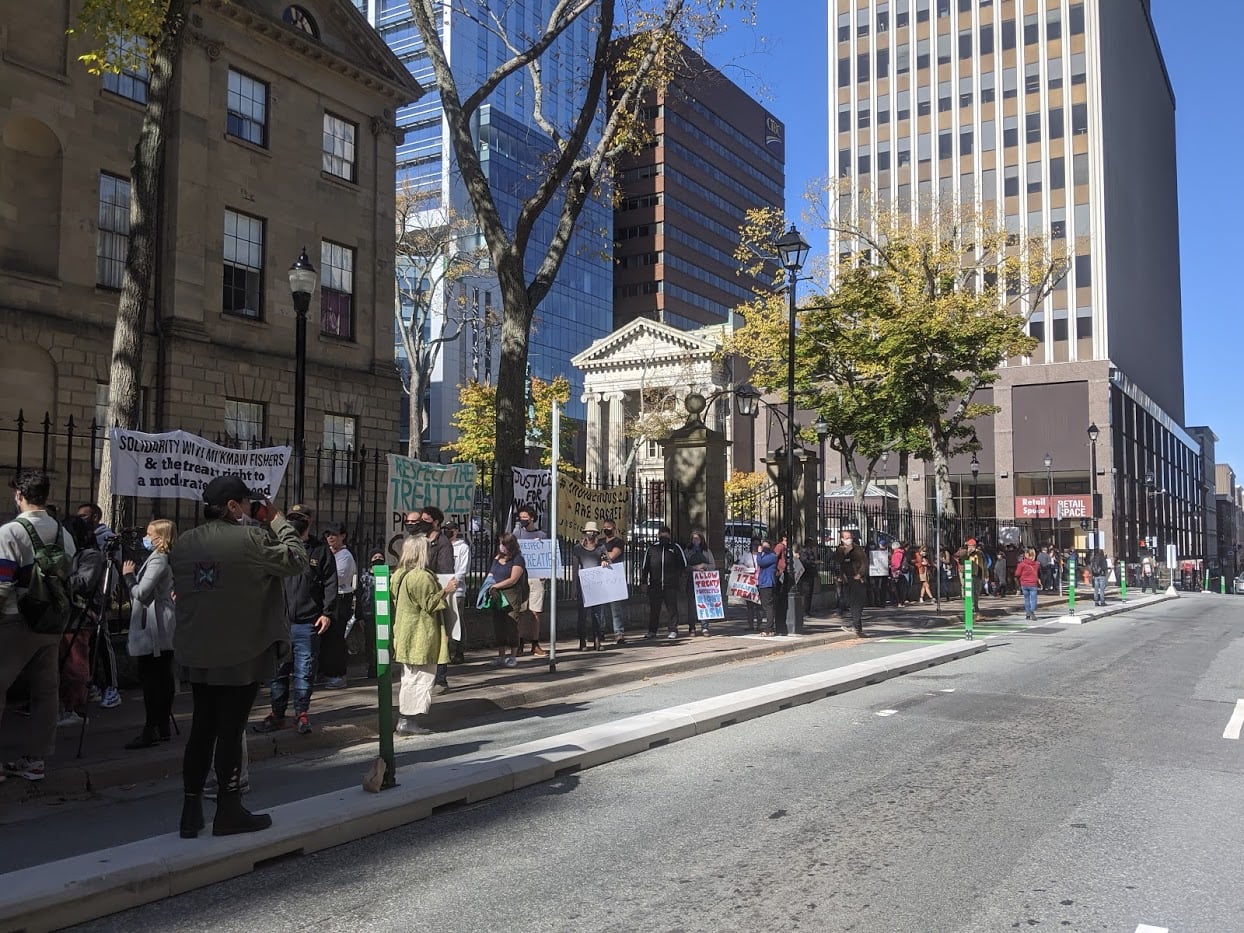
in Oct. 2020. (Robert Devet)
The fact of the matter is that non-Indigenous workers do not earn more on average, have higher employment and housing rates, or experience lower rates of social barriers and ills such as incarceration because Indigenous people do not. There is more than enough wealth and resources to guarantee everyone a high standard of living above and beyond the basic necessities. No one group of workers needs to sacrifice what crumbs they do have for another to receive more. Any argument to the effect that non-Indigenous people benefit from the oppression of Indigenous people is therefore reactionary as it plays into the hands of the capitalist class—scapegoating one section of the workers for what is essentially a problem of the system.
The problem is that under capitalism, the majority of the wealth is appropriated by a parasitic minority, the capitalist class. To put it another way, the reason why some layers of the working class and oppressed have less is because the ruling class appropriates the majority of the wealth. The continued oppression of some groups under capitalism drives everyone’s standard of living down in a race to the bottom, while securing greater profits for the bankers and bosses. Oppression also serves to keep the majority divided and prevents us from uniting against our common oppressor. This only serves the interests of the capitalist class. The working class and all of the oppressed have everything to gain from uniting to wrest the wealth and power from the ruling class. But it has everything to lose by remaining divided and competing over the crumbs. Ultimately, as long as one section of society is oppressed there can be no genuine freedom for the rest of us.
As Howard Adams explains:
In Canada, indentured or semi-slave labour had to be secured and made available for businessmen of the fur trade industry. Racial stereotypes and prejudices then developed from the realization that Indians provided potentially cheap labour for trapping furs and for whatever other jobs had to be done. Not only that, but they were found to be the most efficient trappers and fur gatherers. So European scholars and clergymen began creating racial theories which showed that the native people of North America and other colonies were primitives, innately inferior and subhuman.
Racism against Indigenous peoples is therefore a fundamental feature of Canadian society. While many people try to explain that this was something in the past, the results of the Final Report of the National Inquiry into Missing and Murdered Indigenous Women and Girls in 2019 shows that racism is alive and well in Canada. With the fur trade no longer being the cornerstone of the economy, the racial theories about Indigenous people have not gone away but have simply changed form. While today Indigenous peoples technically have equal rights before the law, the pervasive racism leads to the denial of good jobs and opportunities, perpetuating a vicious cycle of poverty and dispossession. This is rooted in the capitalist system which uses racism to justify paying certain sectors of the working class less.
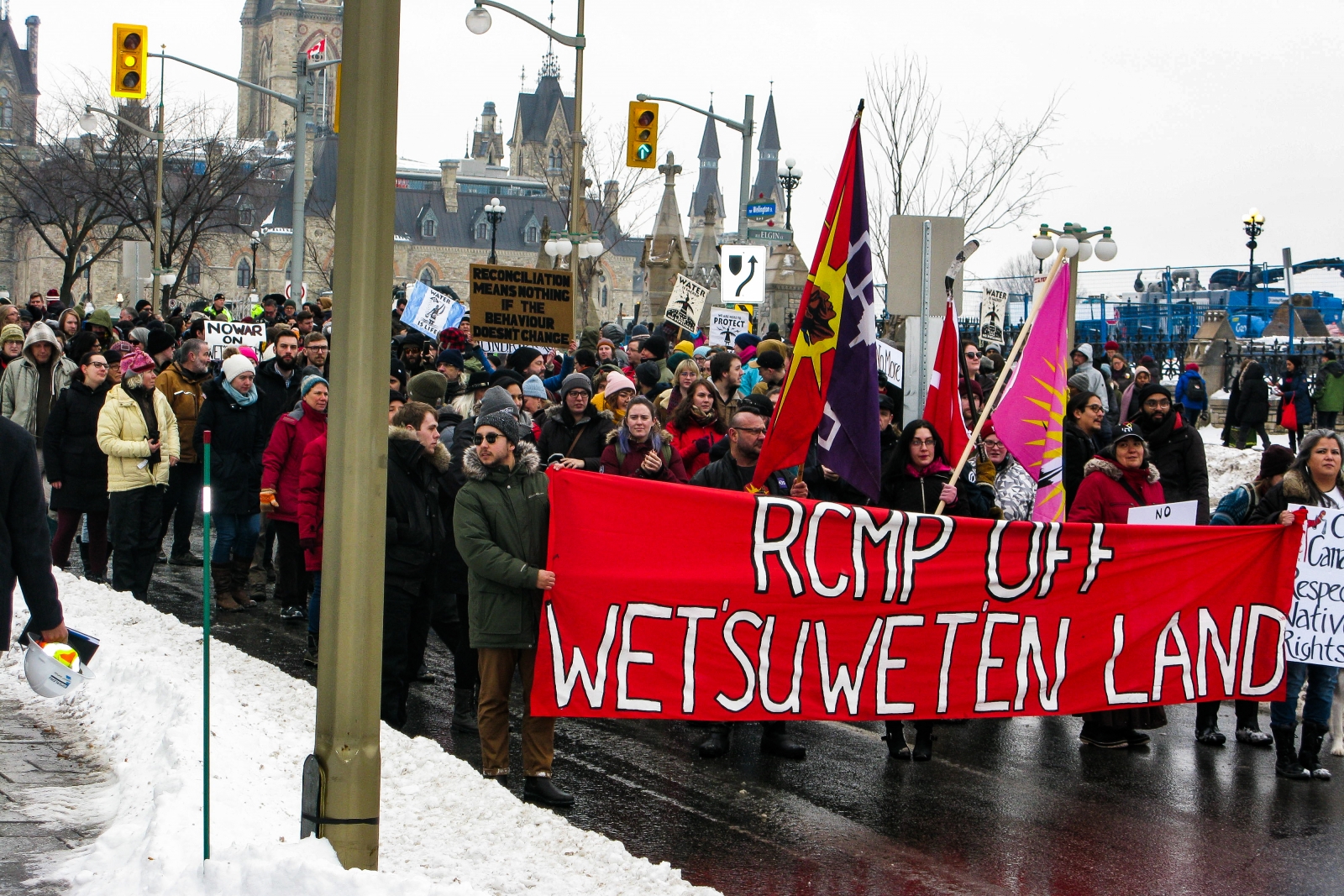
Adams further explains:
By classifying us as inferior workers, they could get their work done more cheaply. Native workers are invariably treated in this discriminatory way: branded with the same racial stereotypes—late for work, absent after payday, unreliable on the job—they are then forced to accept poorer wages. In my youth I never solved the puzzle of racism in employment, but today it is clear to me that racism is the product of economics.
Marxists fight against all forms of oppression in the here and now, including fighting for reforms that would alleviate oppression and the impacts of hundreds of years of colonization today. But what is the most effective way to accomplish this? As reforms are never handed over willingly by the ruling class without a struggle, the best way to win any reform is through mass, militant, and collective action from below that makes the bosses and politicians sweat for fear of revolution. Strikes, mass demonstrations and occupations are the kind of tactics that can wrest concessions from the ruling class. The struggle for these concessions must be part and parcel of the broader struggle for socialist revolution. Indigenous people have a long history of militant tactics, but on their own only represent a minority of the population. What is really needed going forward is mass, collective struggle that extends to the entire working class and oppressed peoples.
When Indigenous rights are under attack, the labour movement must organize mass solidarity and labour actions until the community’s rights are upheld or their demands are met. Indigenous people cannot be left to fight against their oppression on their own. It is in the interest of all non-Indigenous workers to fight for the liberation of Indigenous people. Our greatest strength is in unity and an advance for one layer of the working class and oppressed is an advance for all.
Similarly, Indigenous workers and youth must reject academic “postcolonial” ideas that will only result in the isolation and defeat of the fight against Indigenous oppression. A minority cannot defeat the Canadian ruling class and their state. The bringing together of all sectors of the oppressed is precisely what fills the capitalists with dread.
The need for convergence
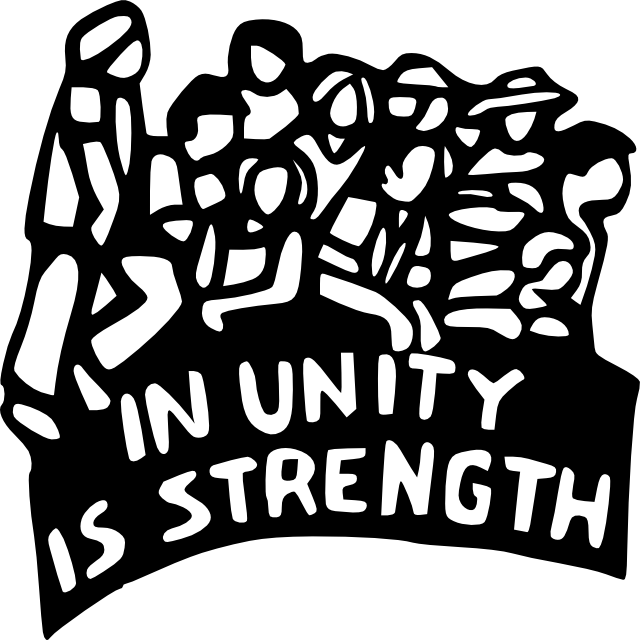
The Canadian ruling class and its state have been terrified for years at the prospect of an Indigenous insurgency. For example, in a Government Operations Centre document the RCMP say that “the Unist’ot’en Blockade Camp is the ideological and physical focal point of Aboriginal resistance to resource extraction projects,” adding that, “Convergence can strengthen the arguments of these other groups, increasing the profile and possible effectiveness of their opposition”. Convergence and an insurgency are precisely what are needed. We need the “convergence” of all the oppressed peoples and the exploited, i.e. the entire working class of Quebec, Canada and the rest of North America. We must stand and fight as a class for an end to centuries of capitalist oppression and exploitation of Indigenous peoples.
But taking on the big corporations who, with the coordination of the Canadian state, are trampling on Indigenous land rights while simultaneously exploiting their workers and reaping in billions in profits requires a unified struggle of Indigenous and non-Indigenous workers. Through such a united struggle, workers of all backgrounds learn in practice that they can achieve more by fighting together.
Marxists place primacy on the class struggle because it is the sole means by which the capitalist system and the Canadian state can be defeated. It is through the class struggle, through the overthrow of capitalist property relations and the creation of new socialist relations, that the legacy of colonialism and racism can be tackled. The capitalist mode of production is based, at its core, on the extraction of surplus value from the workers by the owners of the means of production: the capitalists. This is the root of profit, which is the capitalists’ primary aim. Discrimination, oppression, and colonial subjugation play a significant role in maintaining the capitalist system, but the economic reality of exploitation puts workers in a unique position to bring the system down. Workers are the ones who produce all the wealth in society and can seize the means of production to put them to work in the interest of the majority.
While some people argue that Marxism is alien to the tradition of Indigenous peoples, the fact remains that Indigenous peoples lived a largely egalitarian, communistic way of life prior to colonization. What Marxists wish to do is to return to this but on a higher level.
Karl Marx once said, “A nation cannot become free and at the same time continue to oppress other nations.” The reality is that there will never be any real solution to the question of Indigenous rights and title, to the national question in Quebec, or to the exploitation of the working class within the framework of Canadian Confederation. The working class of North America will never be free so long as the Indigenous peoples of North America continue to be oppressed and subjugated.
The only solution is the complete overthrow of capitalism and the dismantling of the Canadian state and confederation. A voluntary socialist union of peoples, based on genuine equality, the broadest workers’ democracy, and common ownership of the means of production, would have no interest in the continued subjugation of the oppressed peoples.
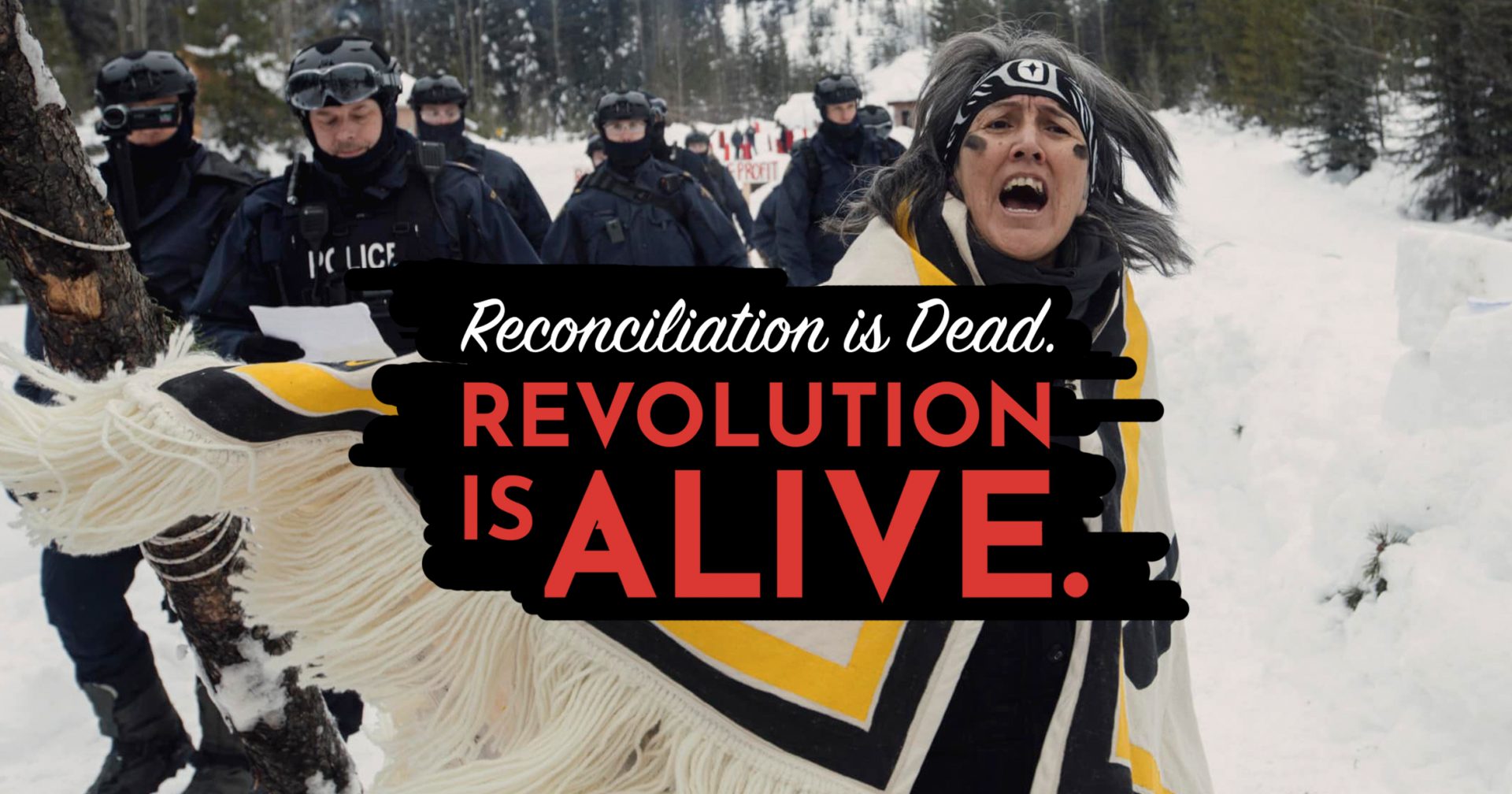
Socialism aims to socialize that wealth under democratic control. Through this, Indigenous communities would be genuinely involved in all levels of production and development. A socialist society, which organizes production and exchange to meet the needs of the people and not profit, would be able to resolve all the outstanding issues and injustices inflicted upon Indigenous people. The immense resources of this land would be able to be put in motion for Indigenous peoples to provide a decent and sustainable standard of living for their people.
It is precisely by freeing up all the wealth of society that the challenges and injustices faced by Indigenous communities can be meaningfully addressed, as they would be guaranteed the funds and resources needed to implement programs and services to meet their needs, and could democratically decide how to go about doing so without outside imposition.
Under capitalism, the question of Indigenous rights is entirely subservient to the interests of the ruling class. The rights of Indigenous people are sacrificed time and time again in order to secure the profits of the capitalists. Under socialism, with a democratically planned economy under workers’ control, production would be based on need and not profit. On this basis, we could immediately begin to work in harmony to resolve the problems of Indigenous rights, title, and autonomy and bring an end to centuries of exploitation, oppression and colonial subjugation.
